Jerz > Writing > Grammar and Syntax > Active and Passive Verbs
 Introduction
Introduction
Active verbs form more efficient and more powerful sentences than passive verbs. This document will teach you why and how to prefer active verbs.
- The subject of an active voice sentence performs the action of the verb: “I throw the ball.”
- The subject of a passive voice sentence is still the main character of the sentence, but something else performs the action: “The ball is thrown by me.”
For a detailed explanation, see my handout, “Active and Passive Verbs.”
For a more colorful introduction to the concept, with self-quizzes, and Legos, see the slideshow “Troy Sterling and the Active and Passive Verbs.”
(The slideshow will appear in the space below.)
About this Slideshow
I originally created this with Impress, the Open Office slideshow presenter, and exported it as a Shockwave file. I’m amazed at how tiny the resulting file is. It looks like a few effects didn’t make the transition, but they were just eye candy.
I designed this as a simple linear slide show, for me to present in the front of the room. In this online version, all you can do is click to advance to the next page. It should at least have multiple-choice questions, in order to ensure that a bored reader isn’t just clicking through on autopilot. (At any rate, it’s more entertaining than my more traditional online guide to Active and Passive Verbs.)
This is just a bit of practice, as I continue to experiment with various media production tools.
I’ve also downloaded Jahshaka, an open-source video editing tool, but it crashed on my little wimpy laptop. I’ll try it again when I get some time at the office.
Update. 22 July 2011: I’ve de-emphasized the original Flash version (which is still online), and replaced it with the WordPress slideshow version (which runs on iPads and other non-Flash machines).
 Introduction
Introduction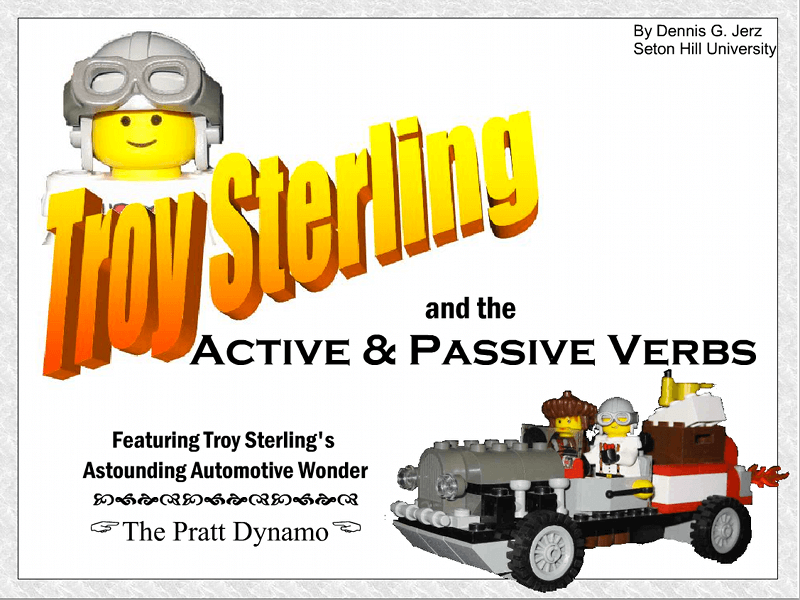

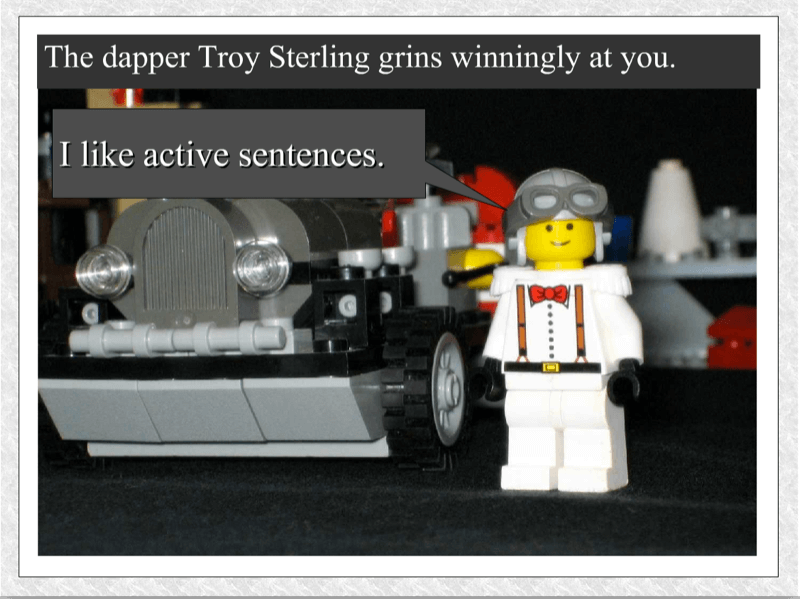
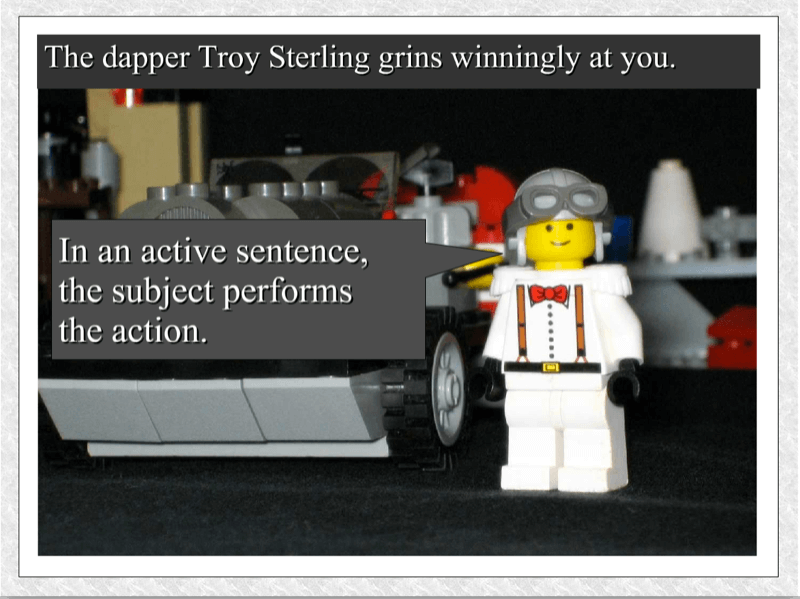
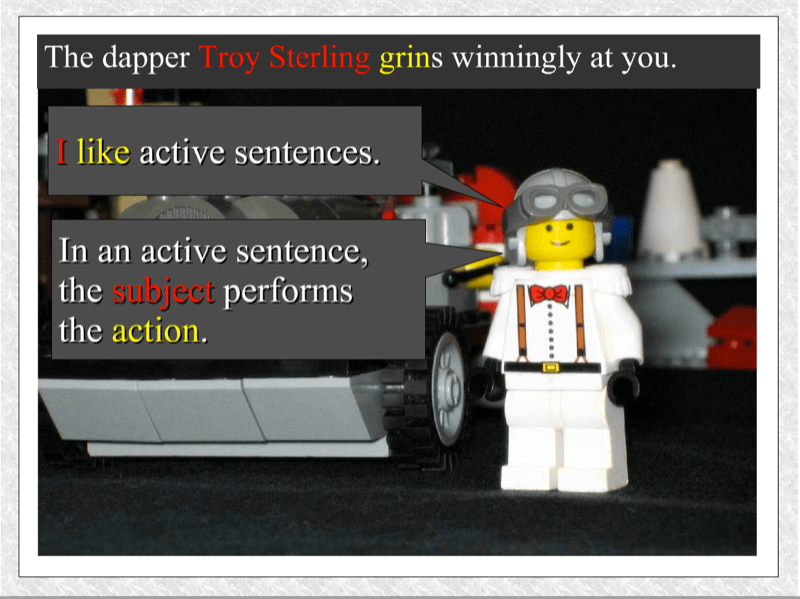
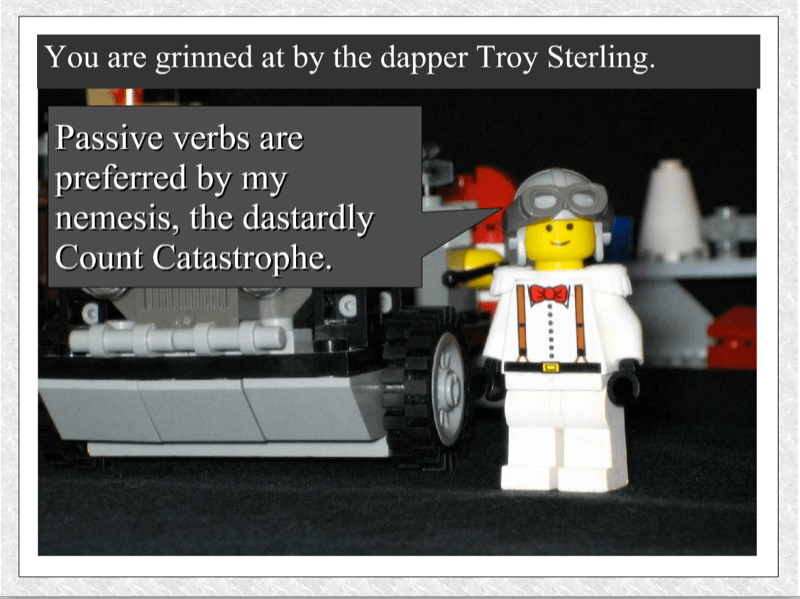
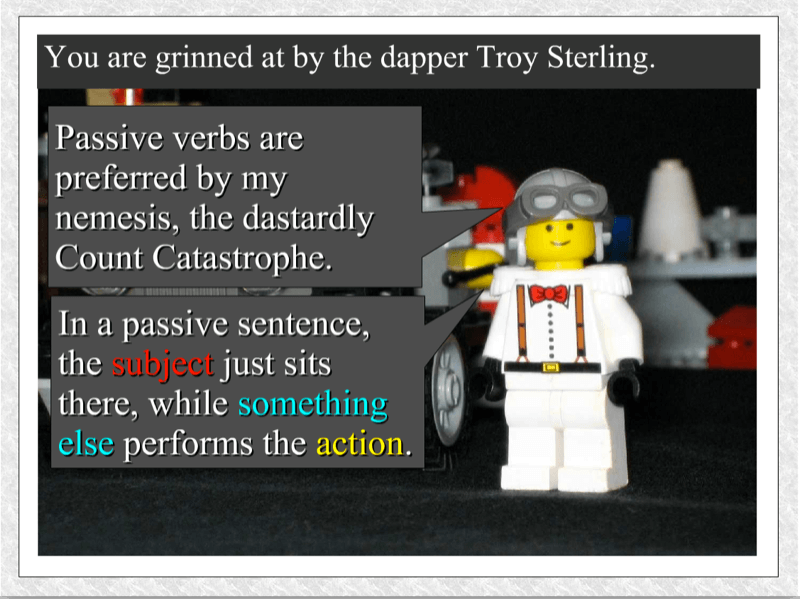
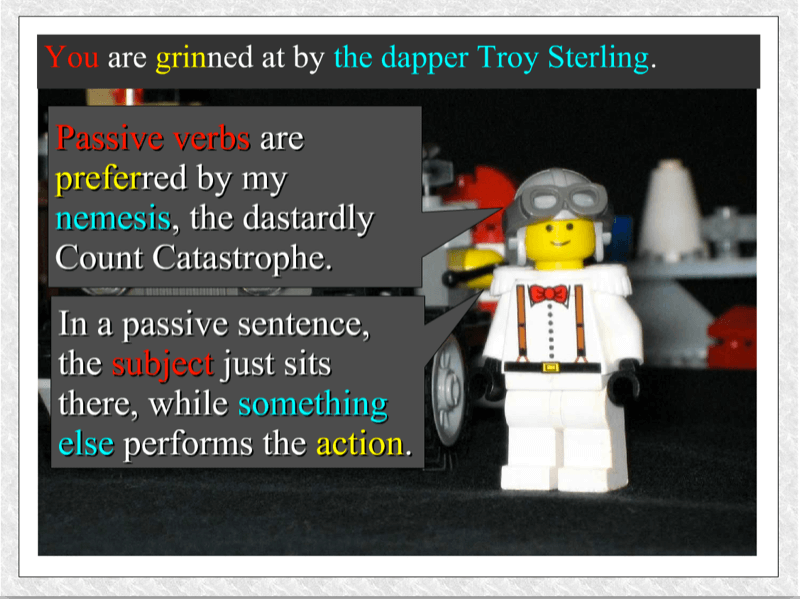
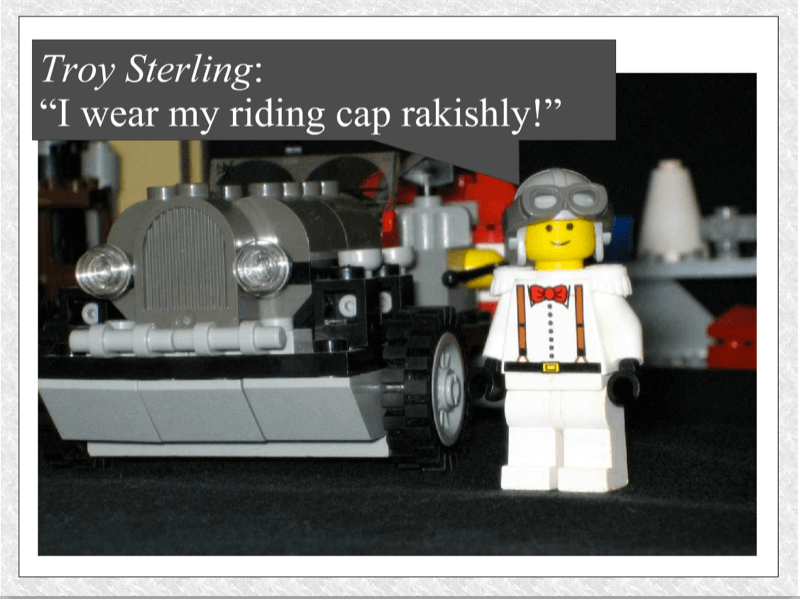
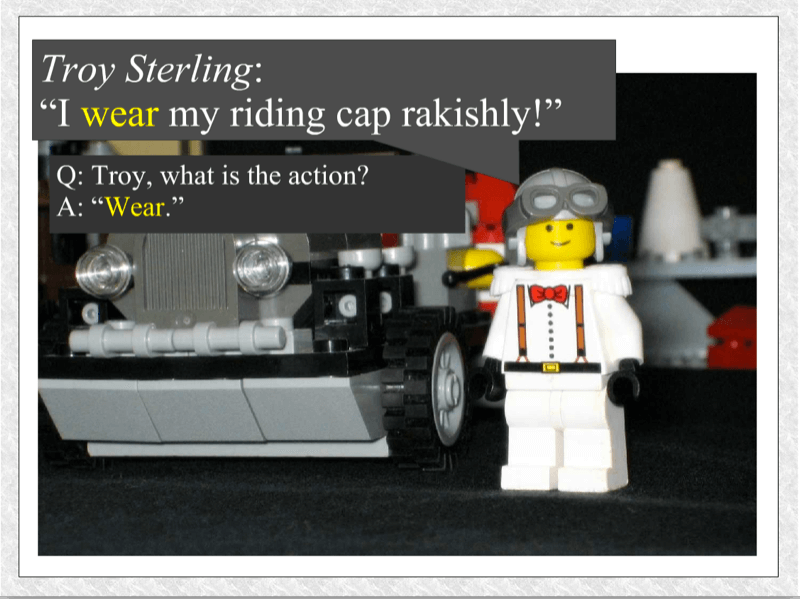
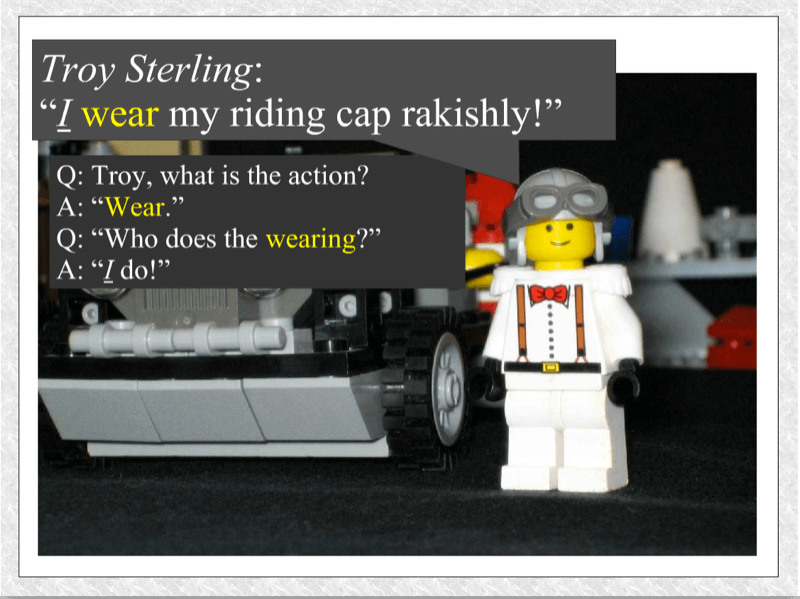
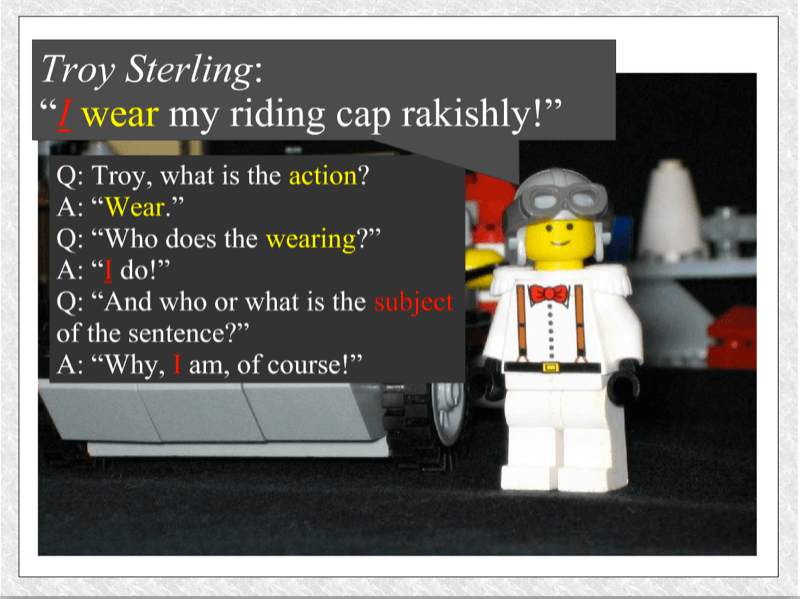
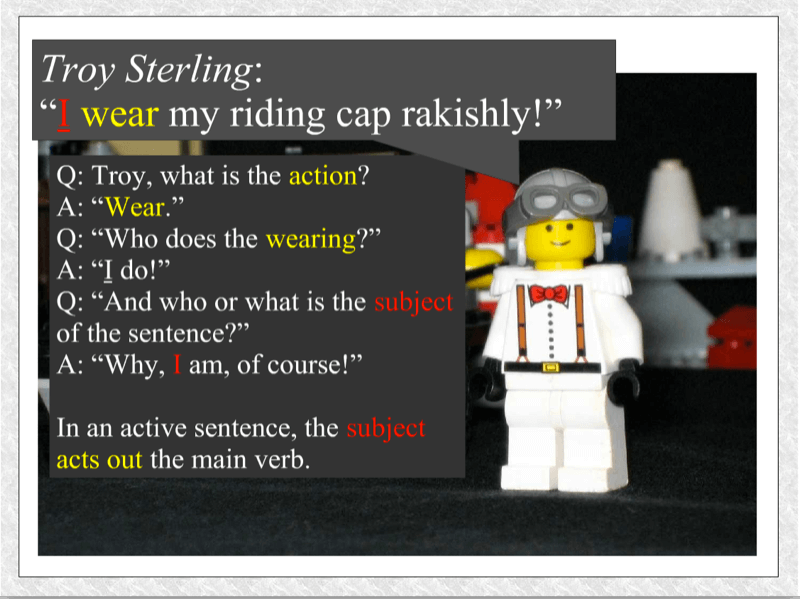
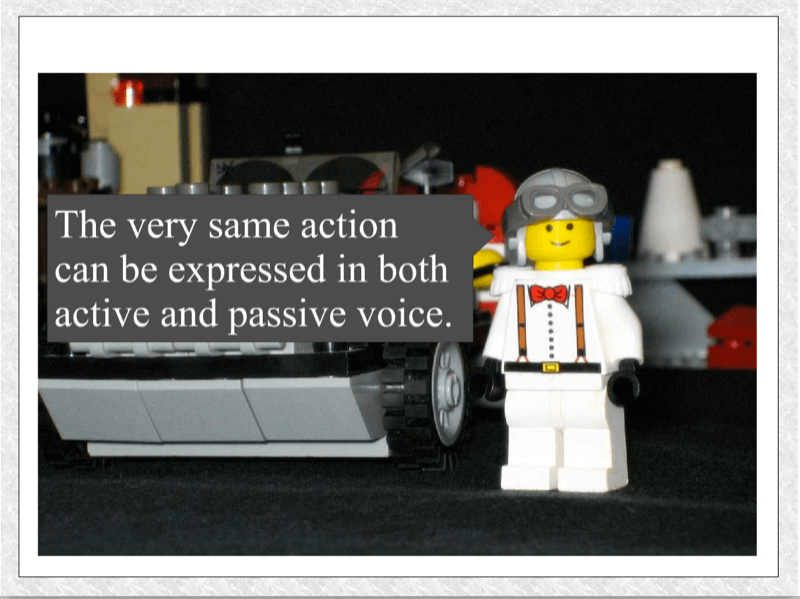
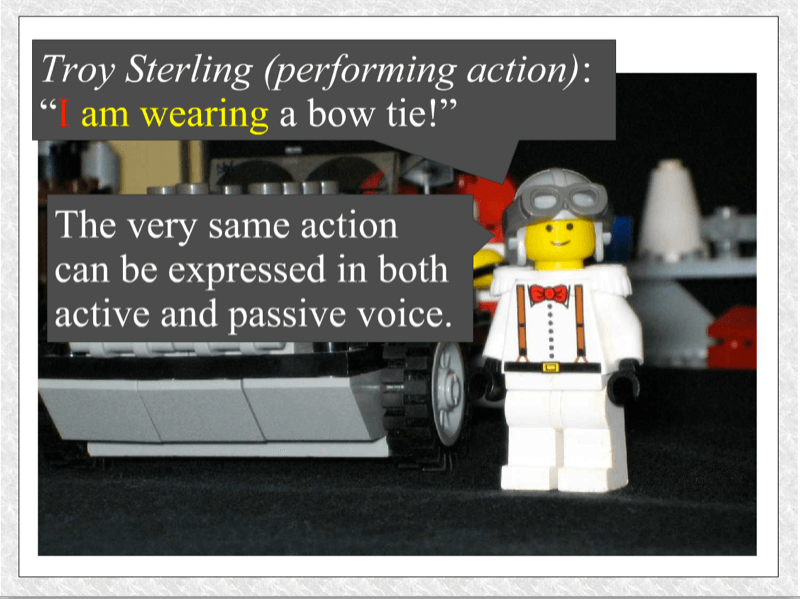
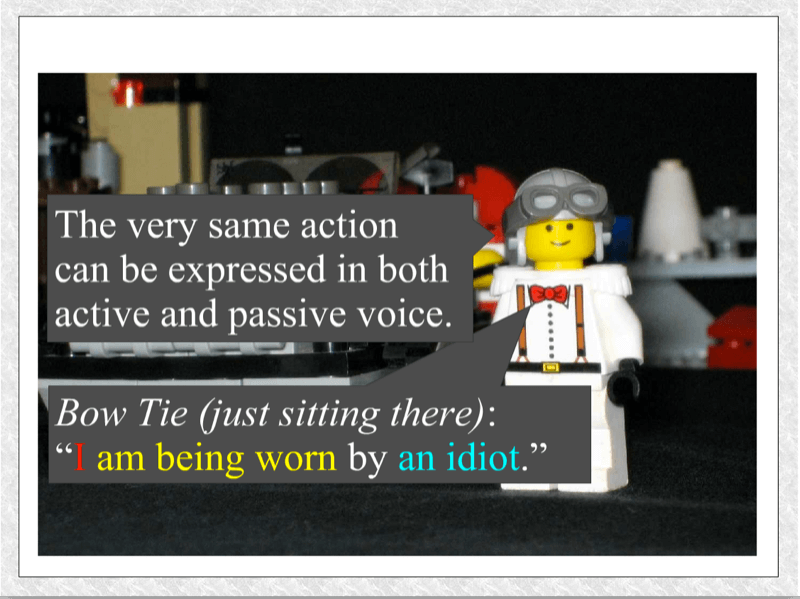
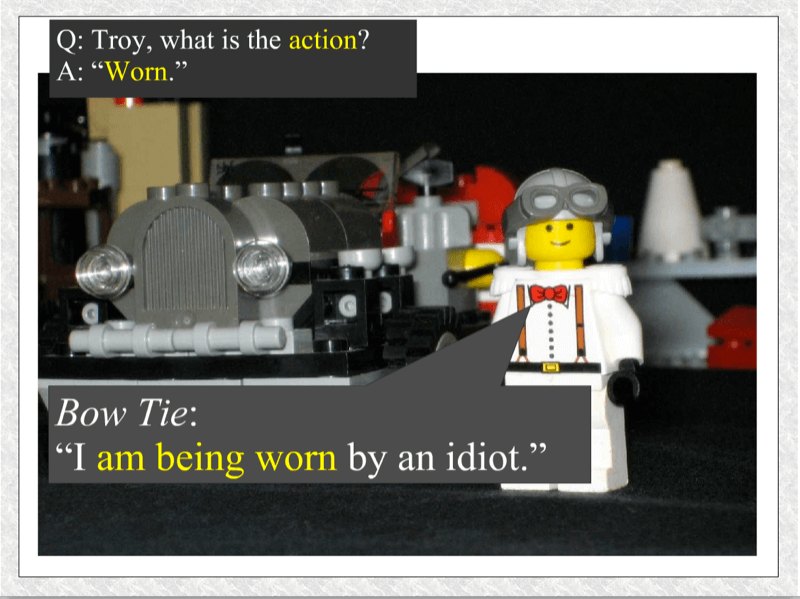
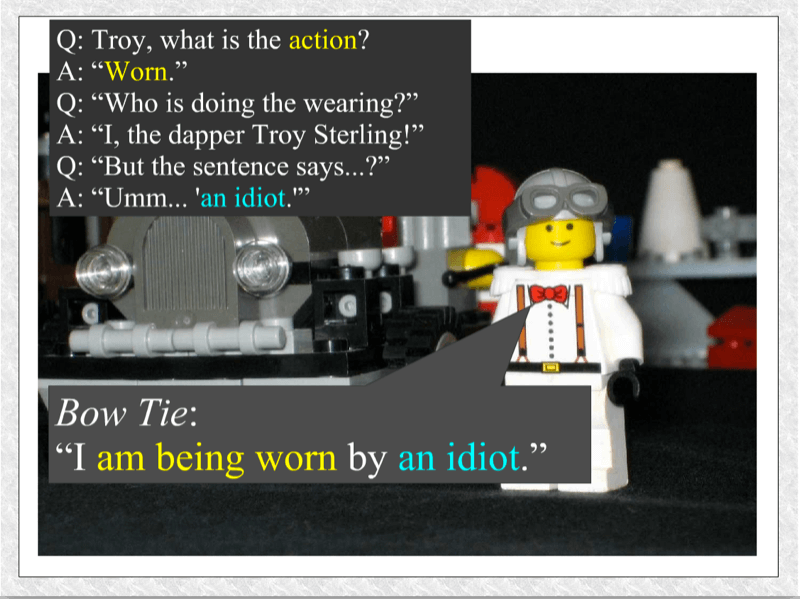
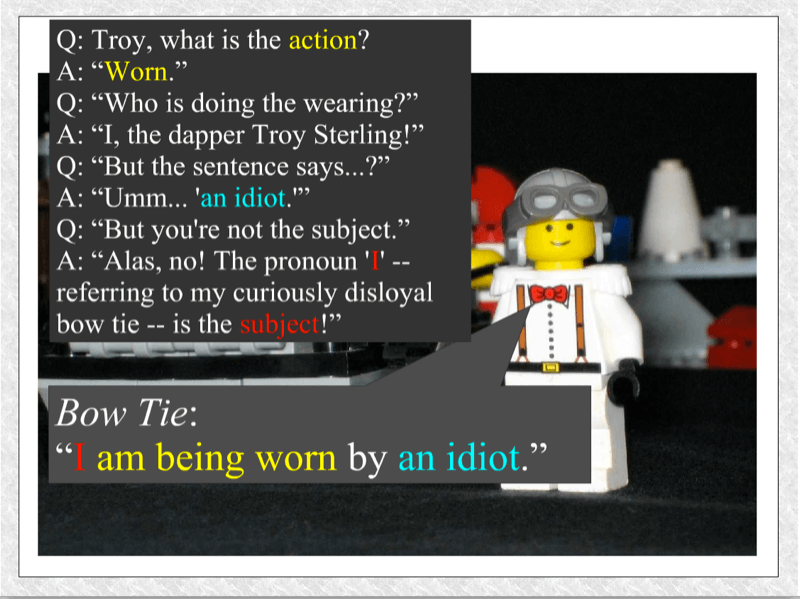
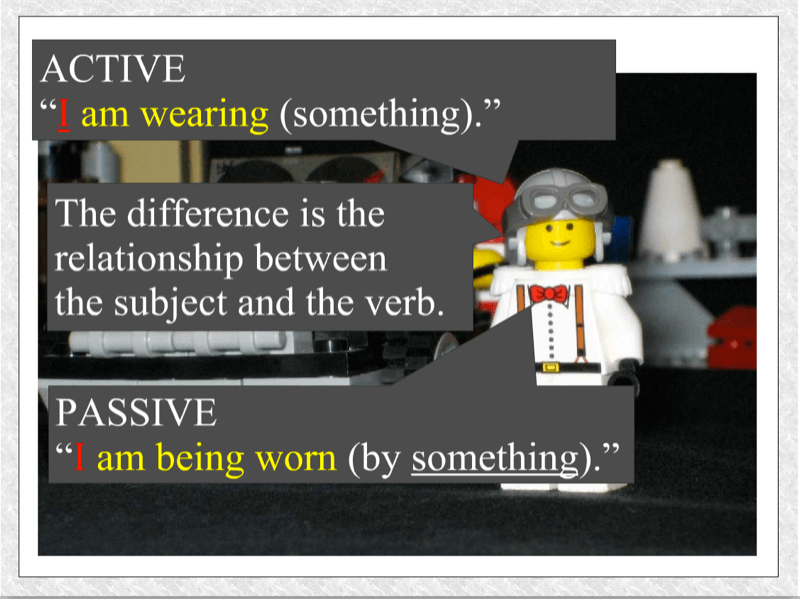
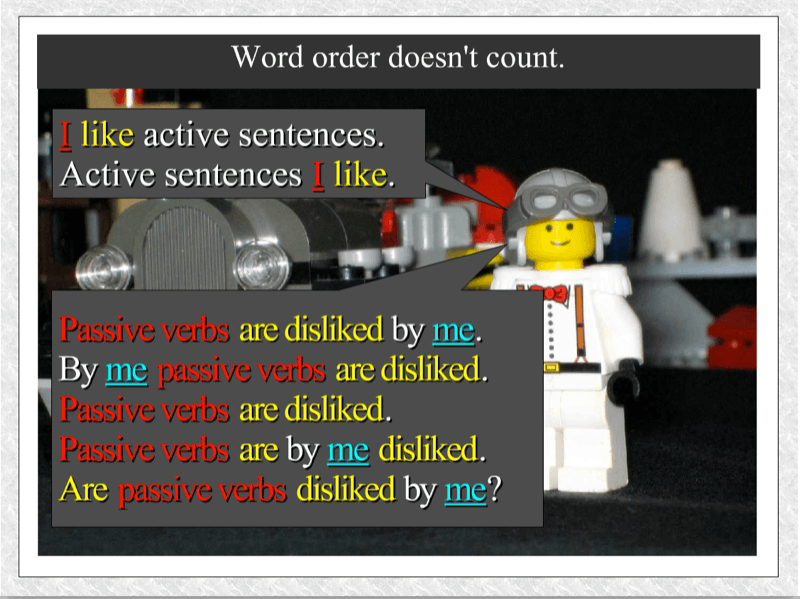
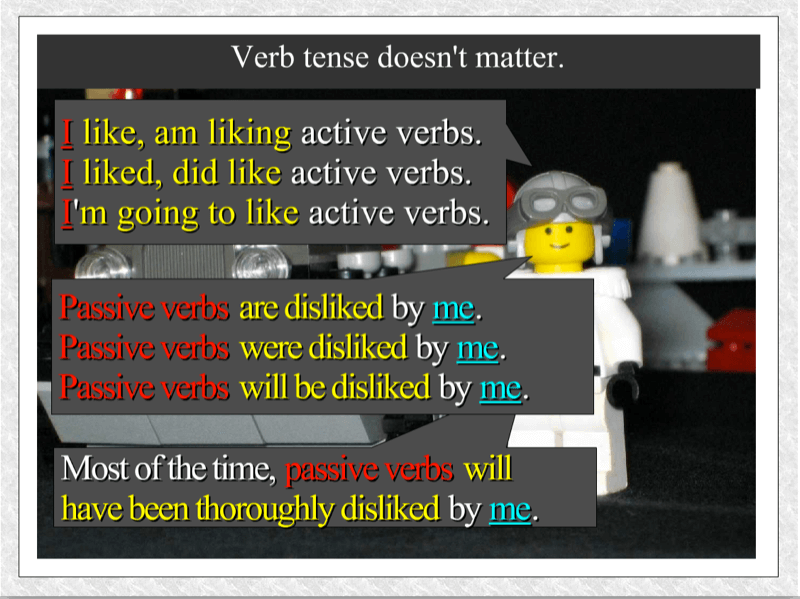
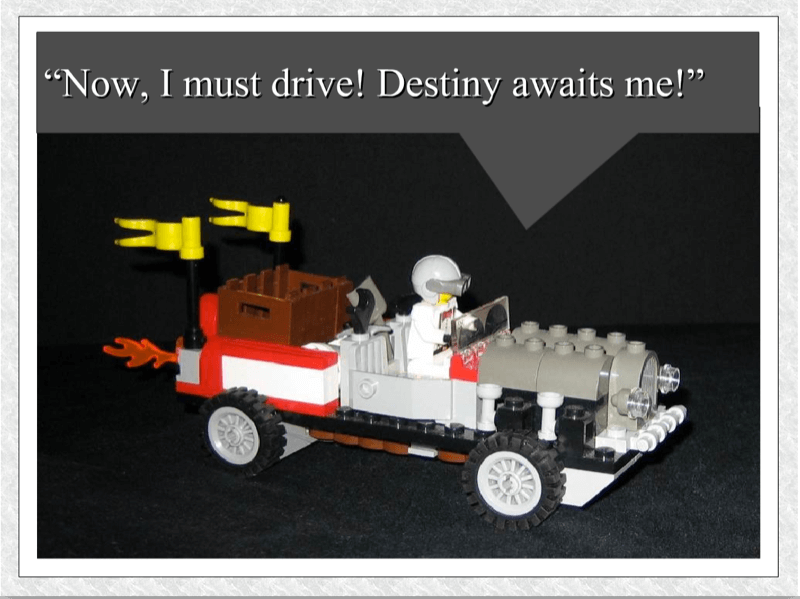
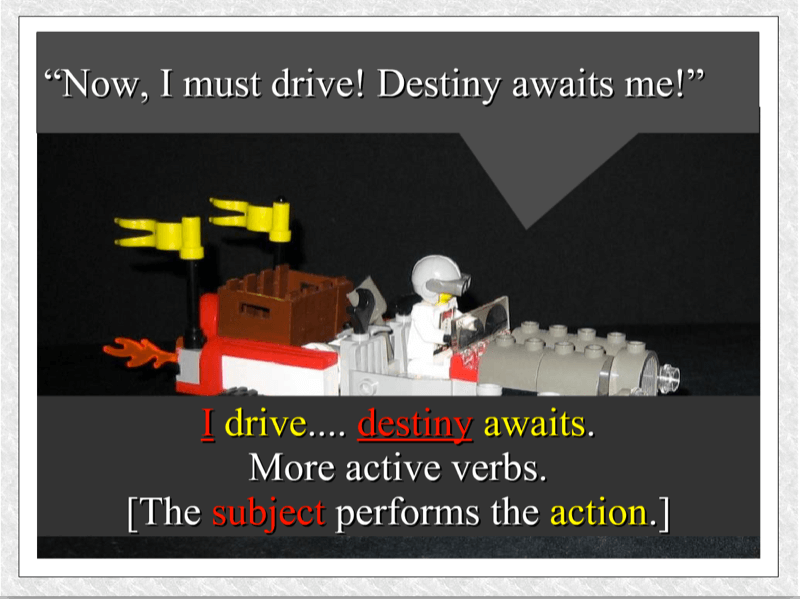
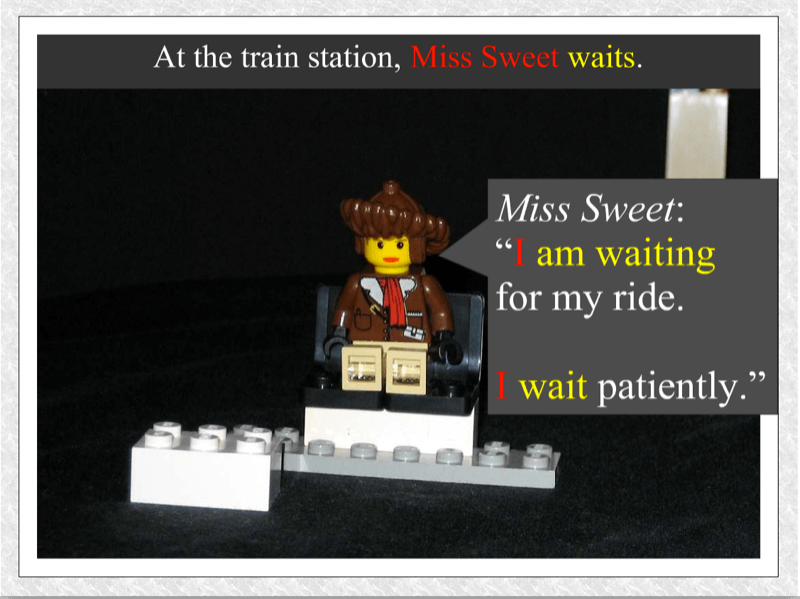
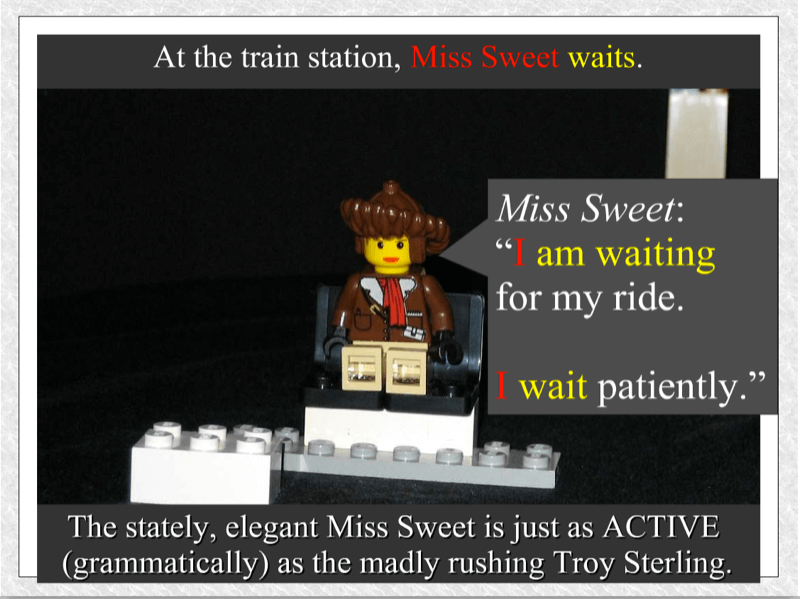
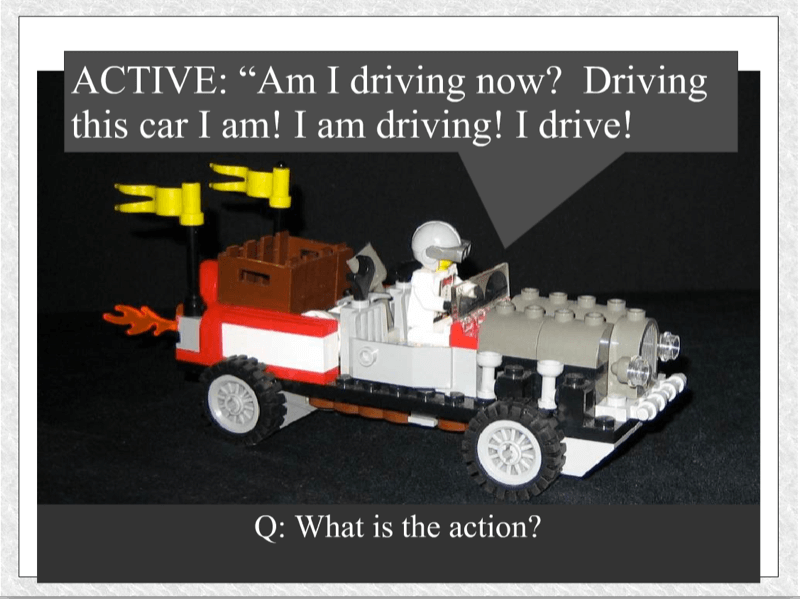
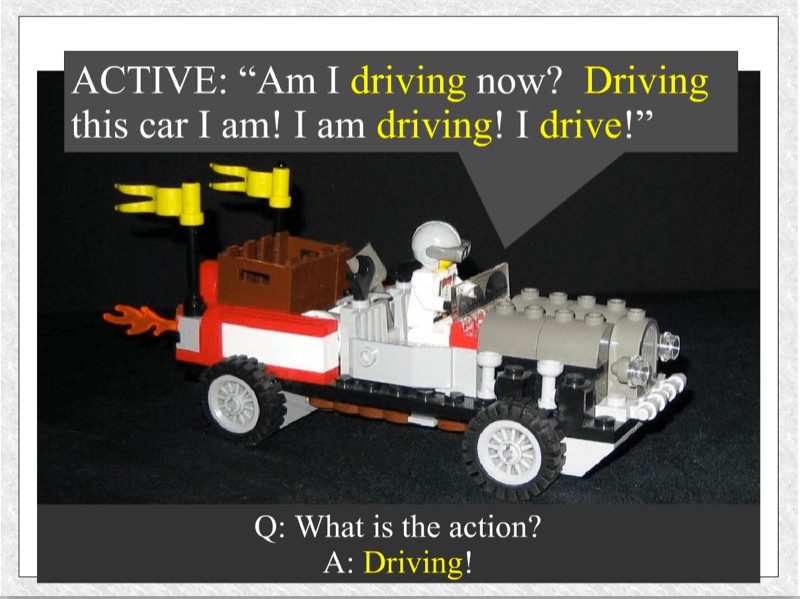
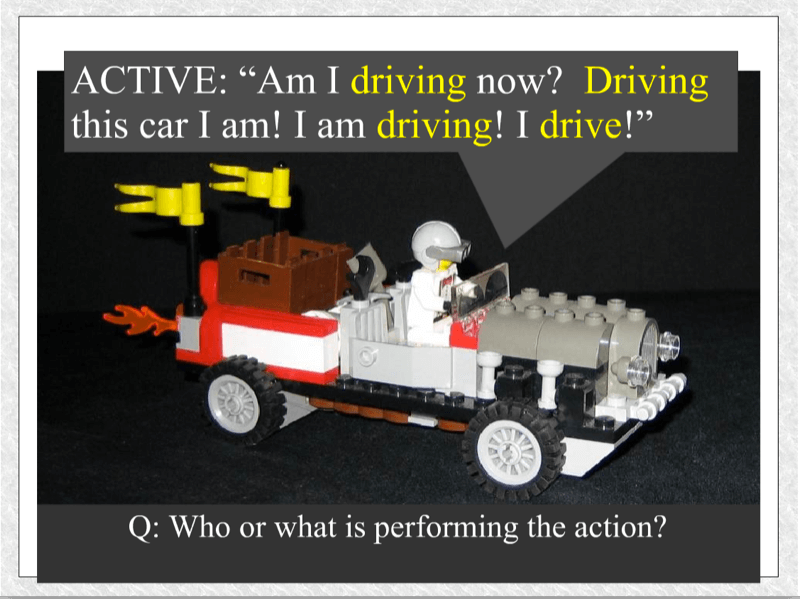
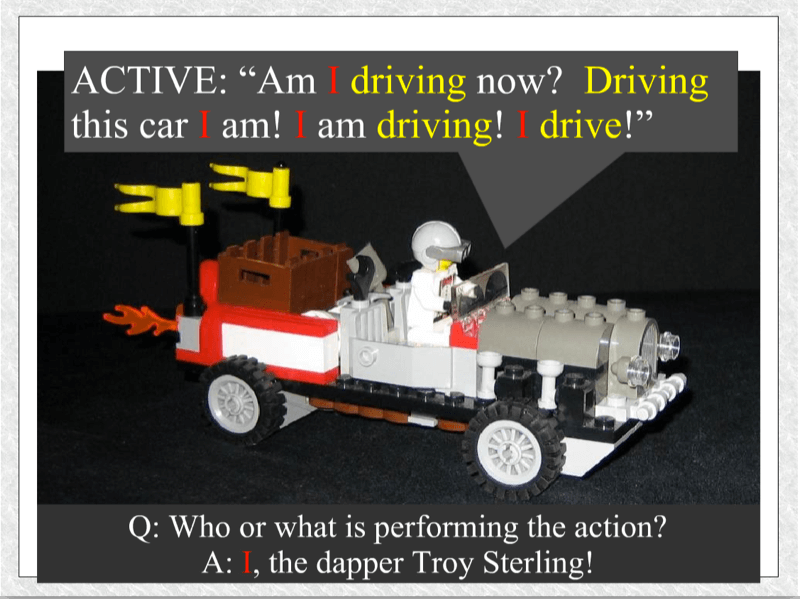
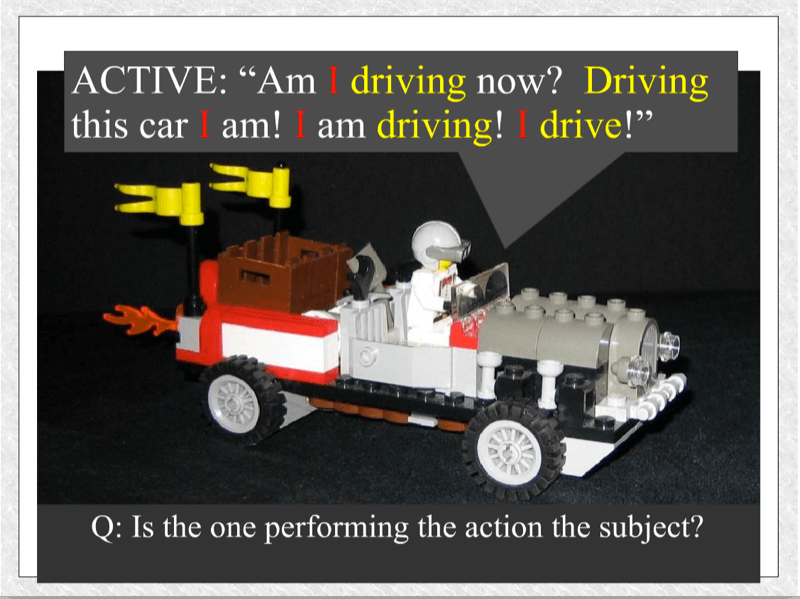
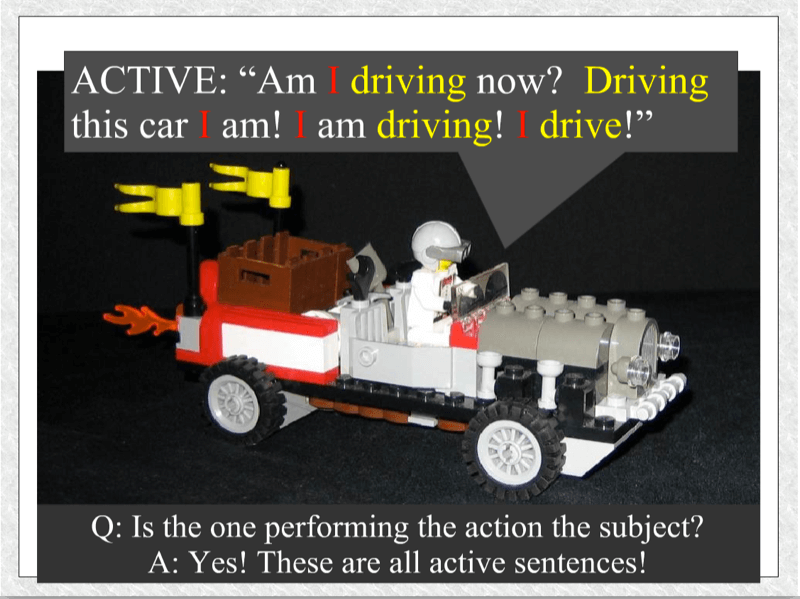
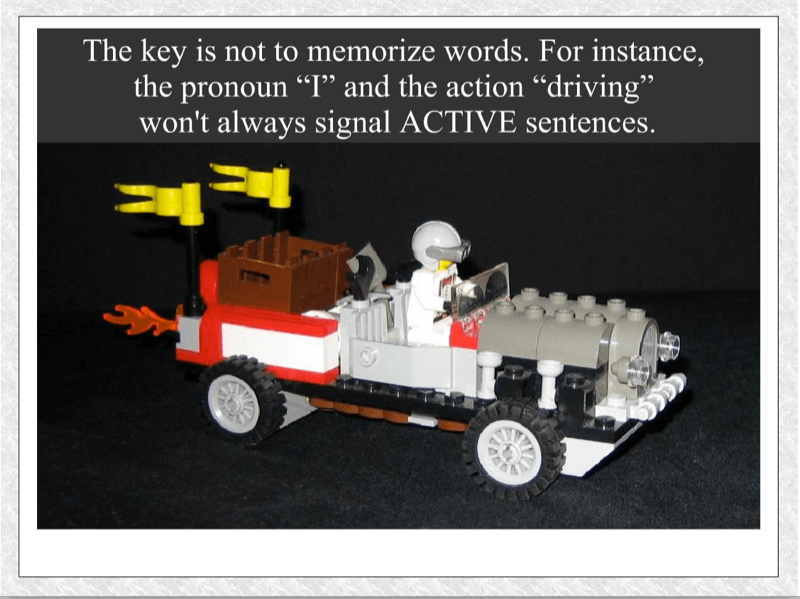
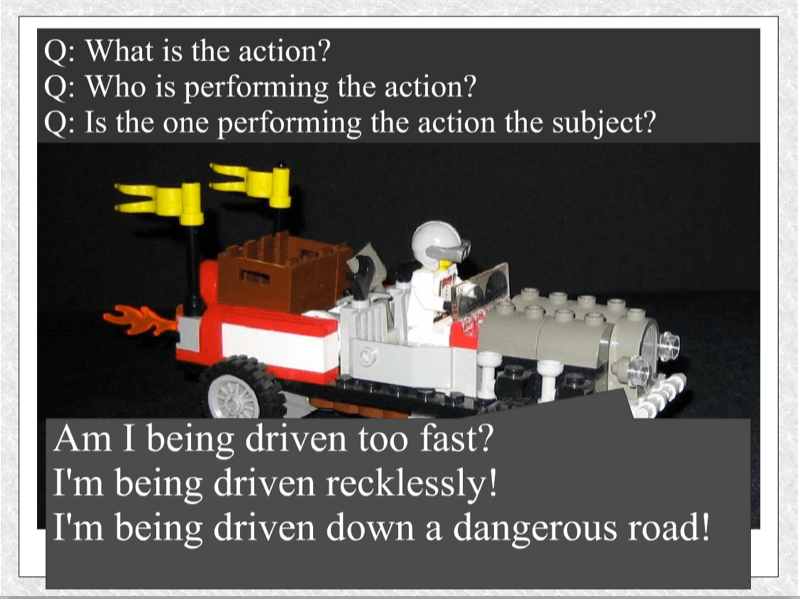
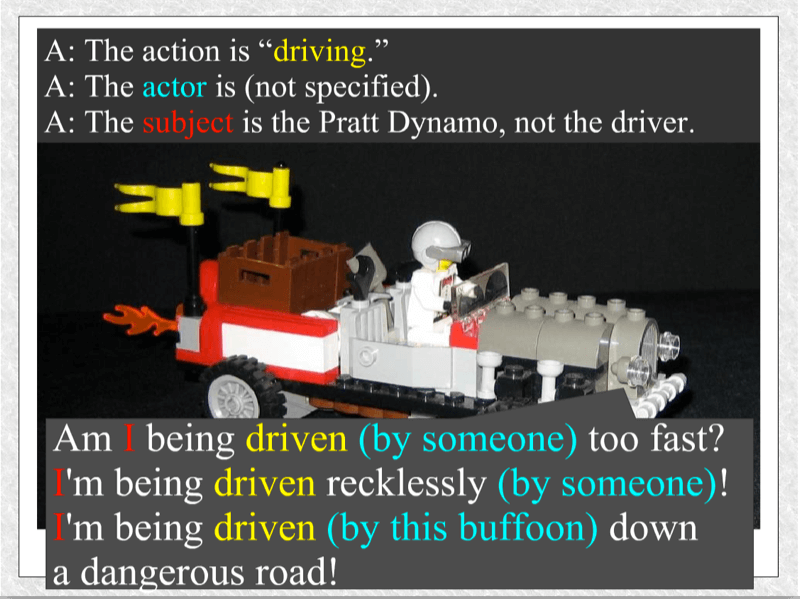
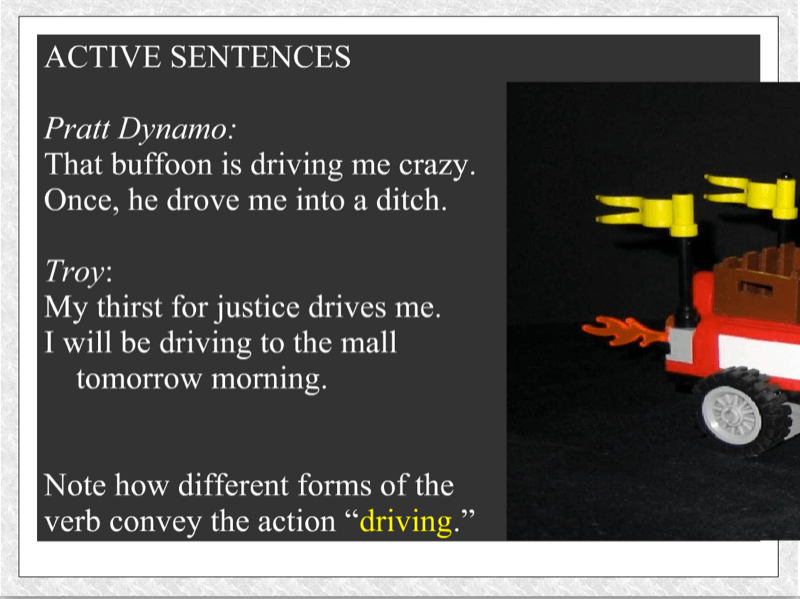
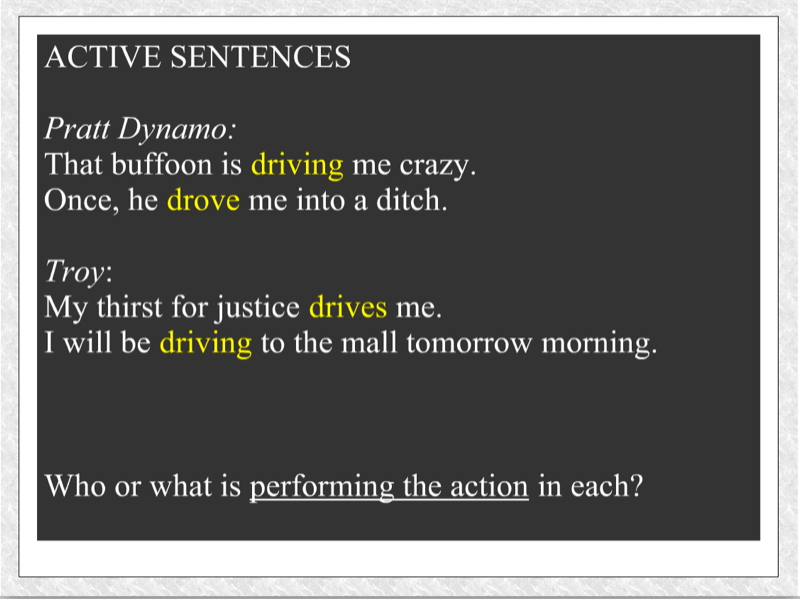
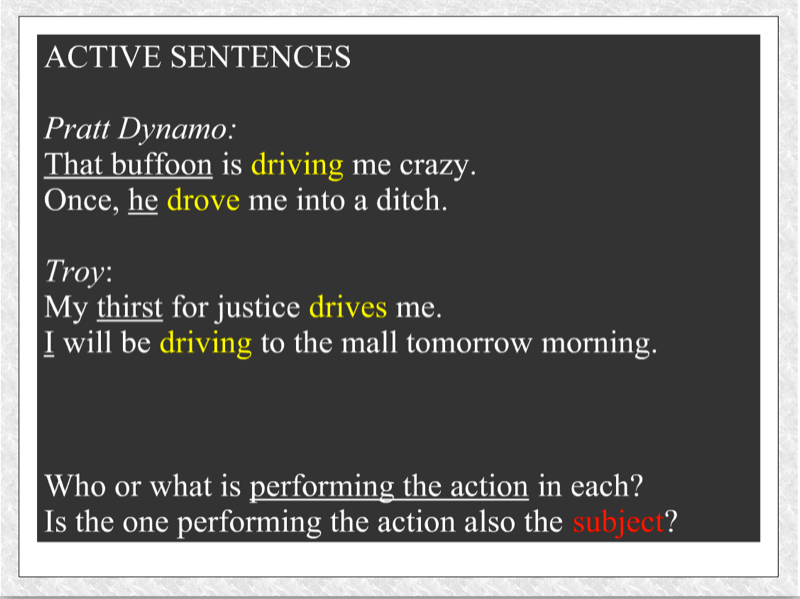
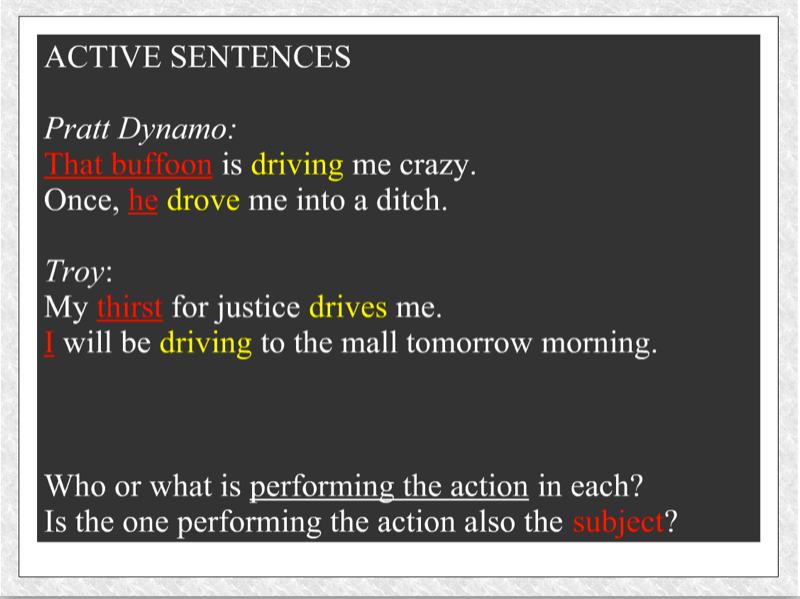

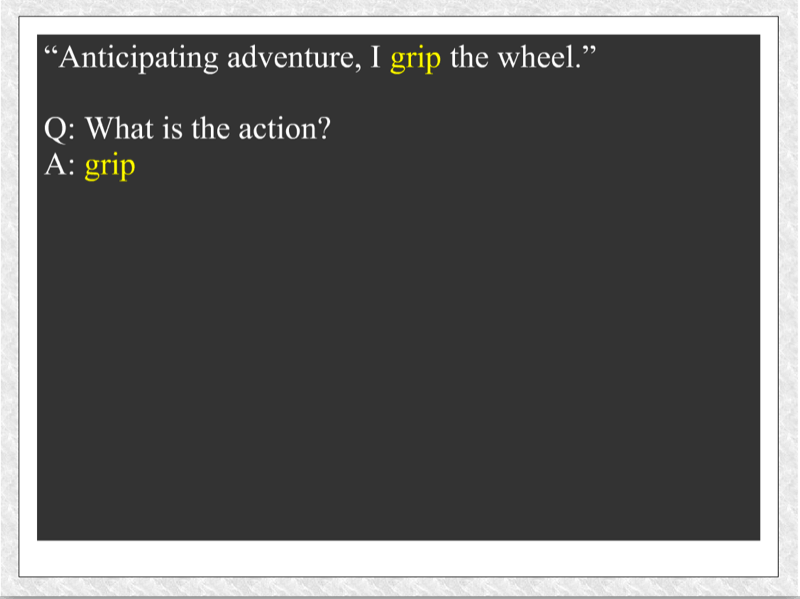
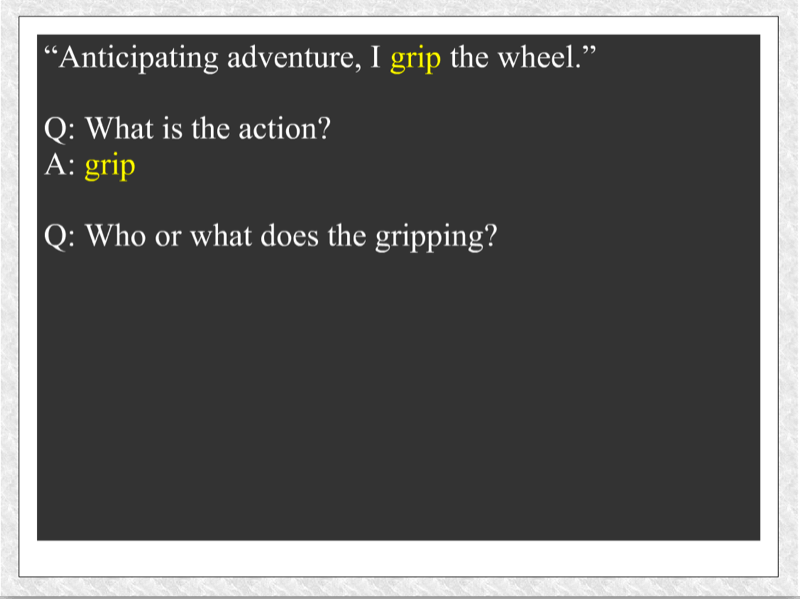
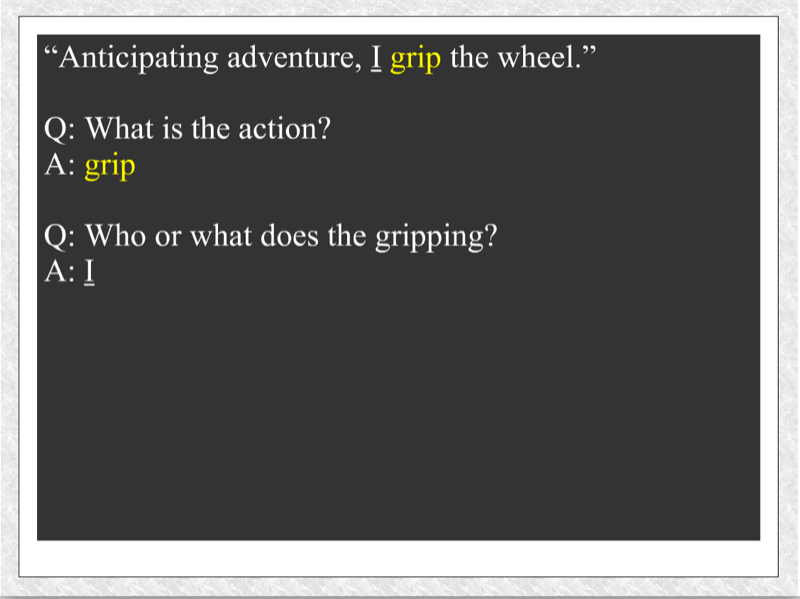
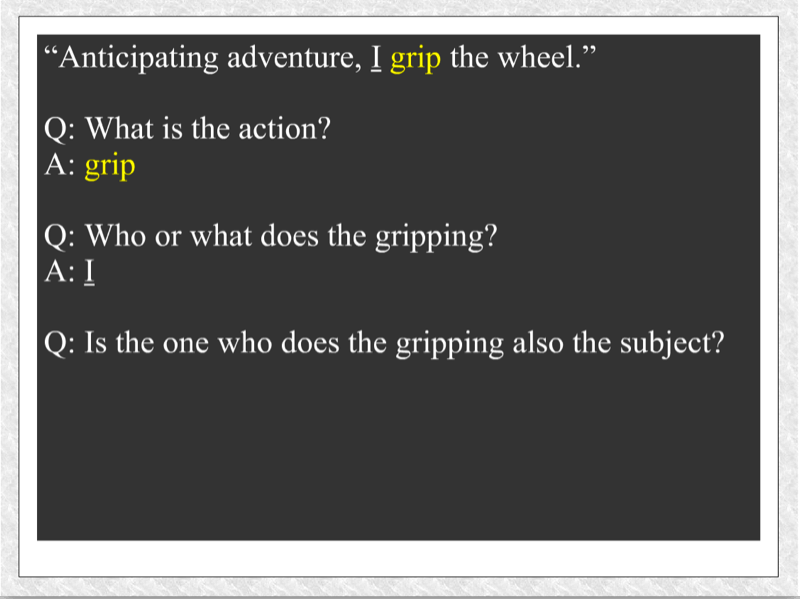
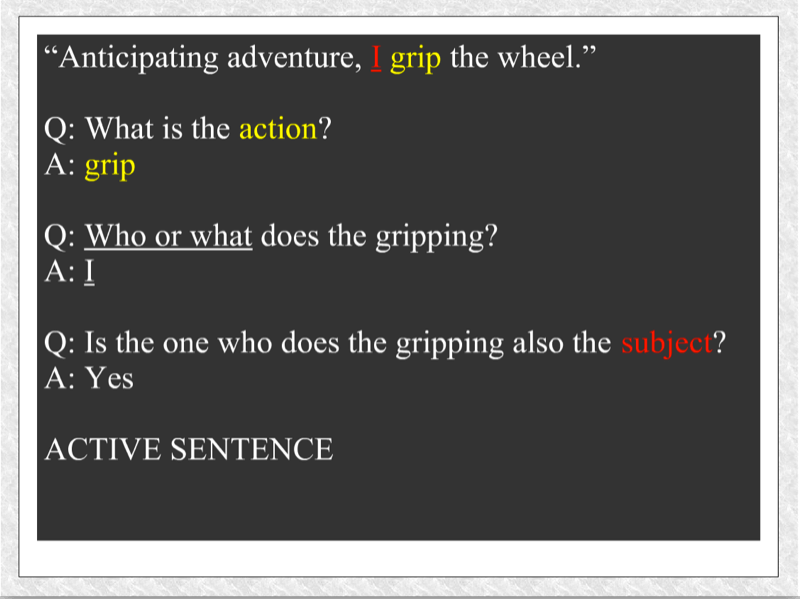
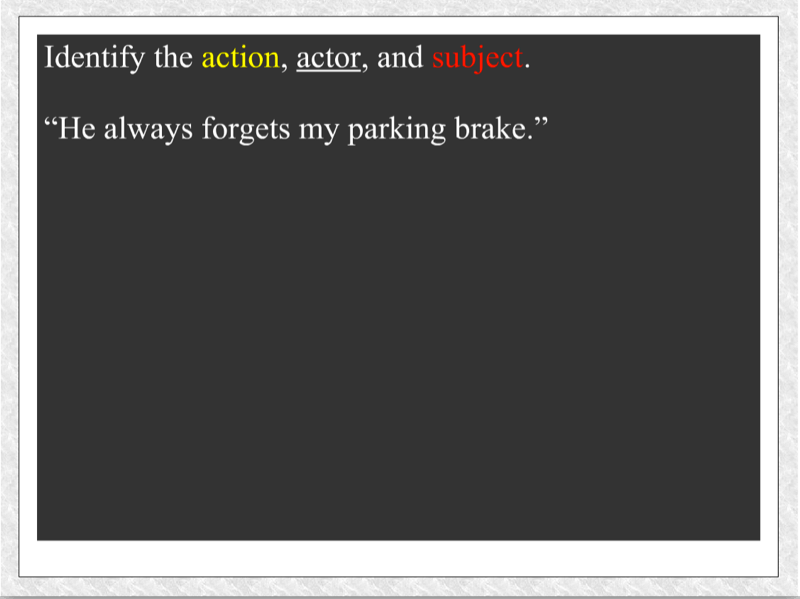
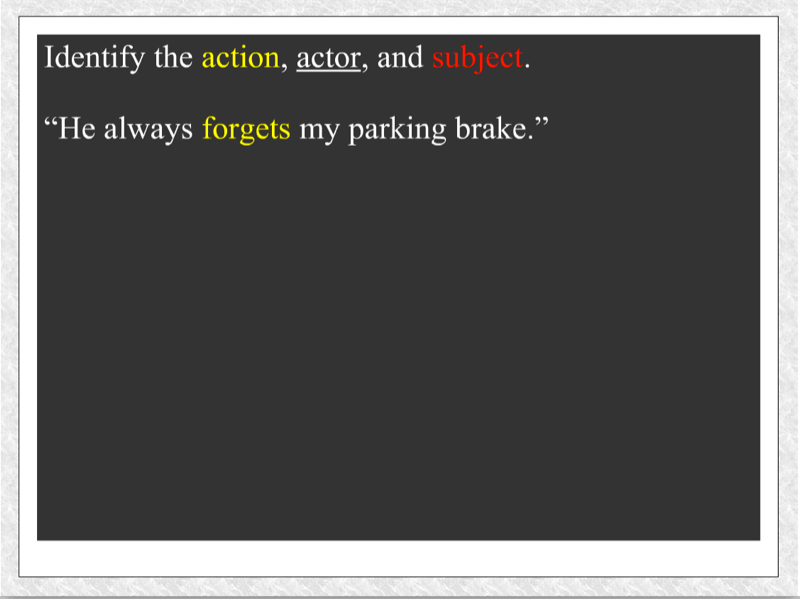
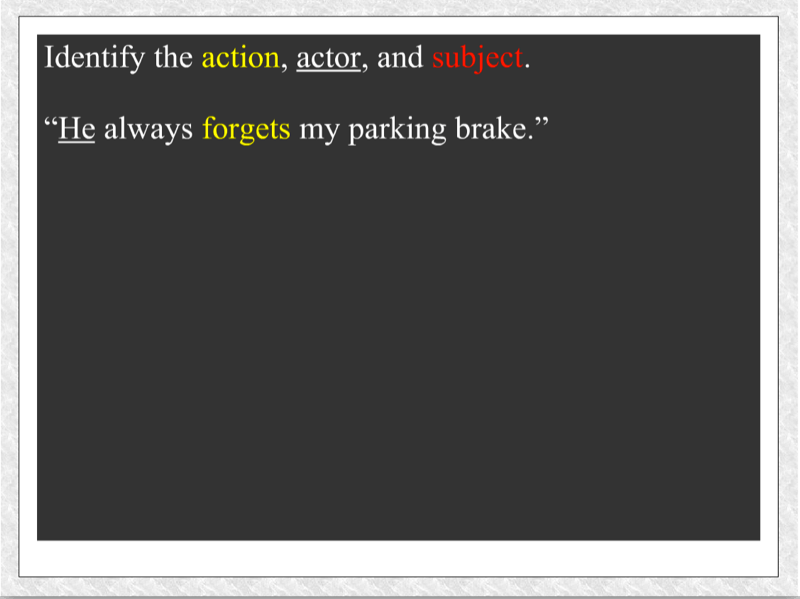
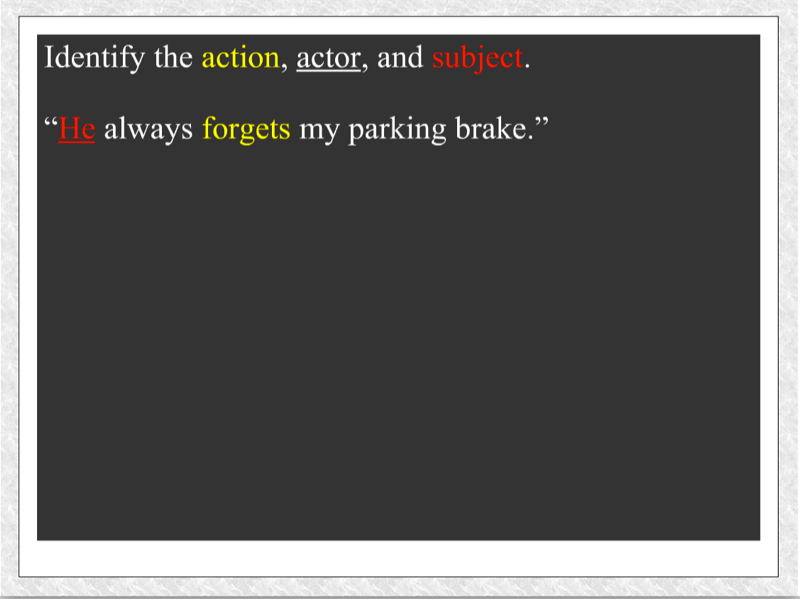

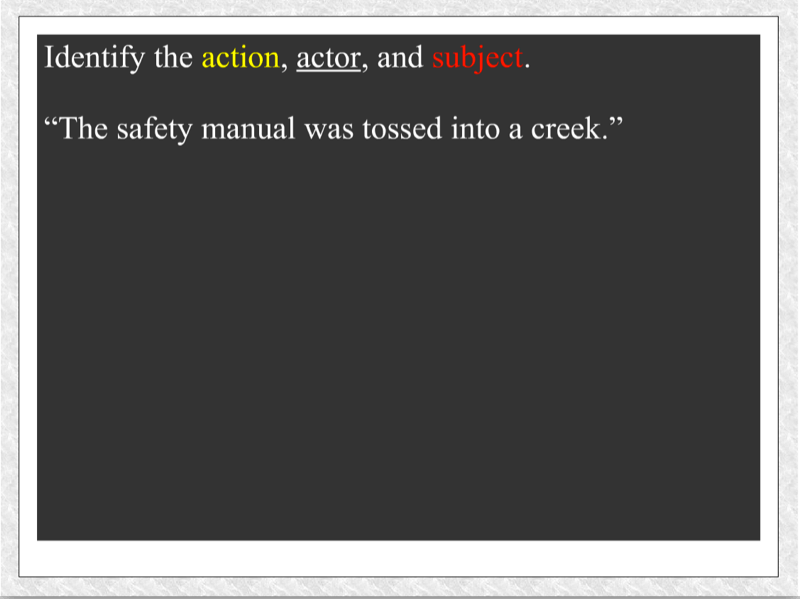
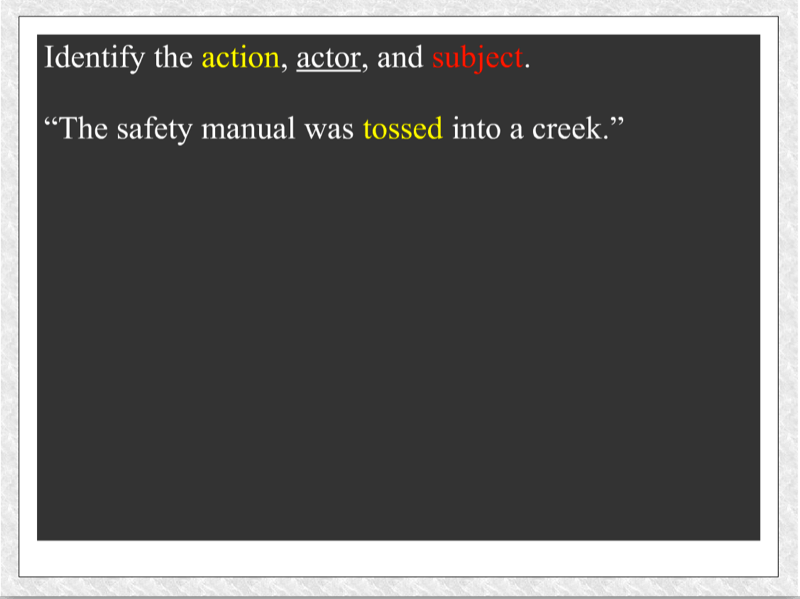
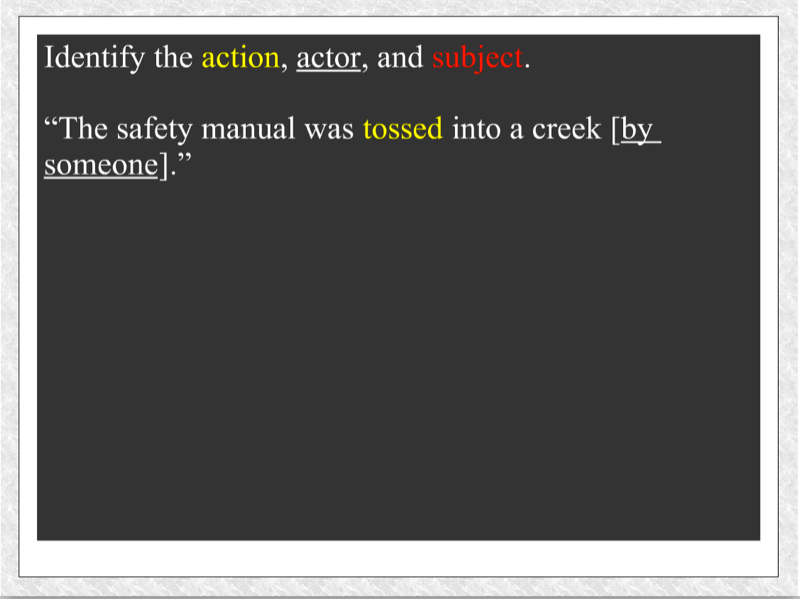

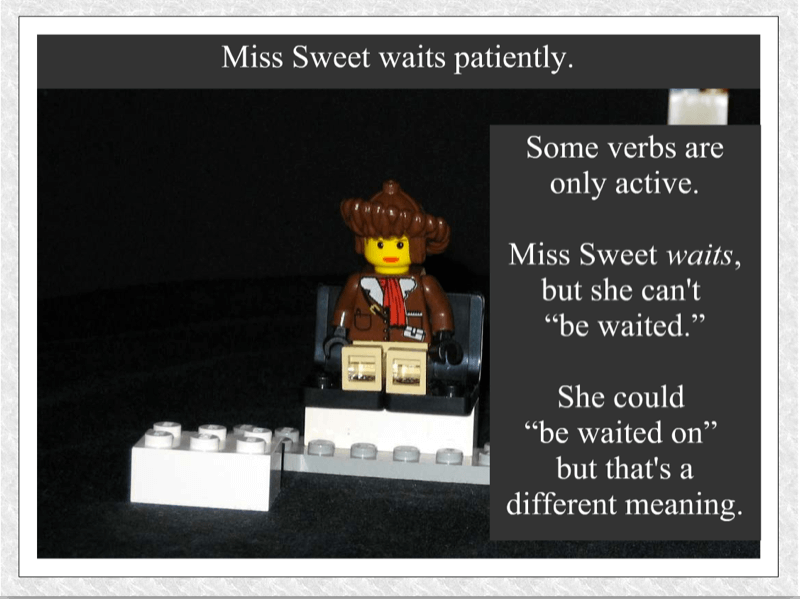
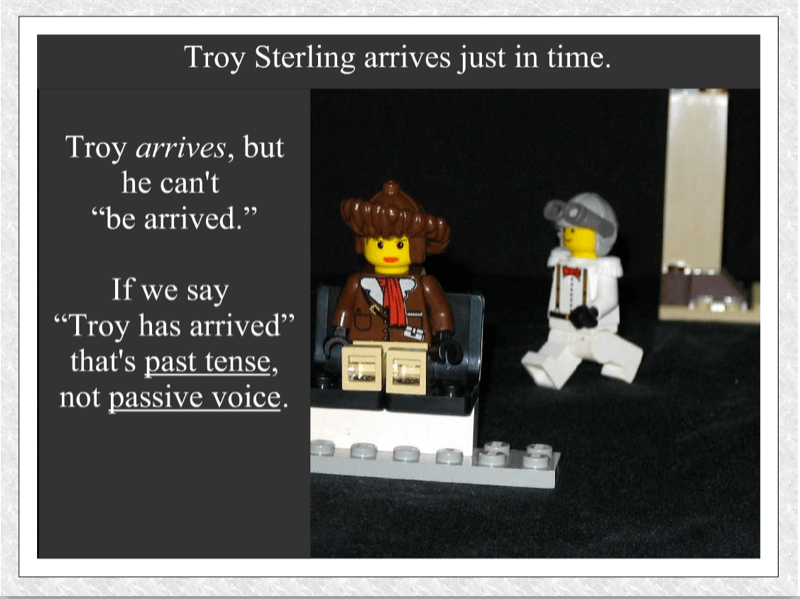
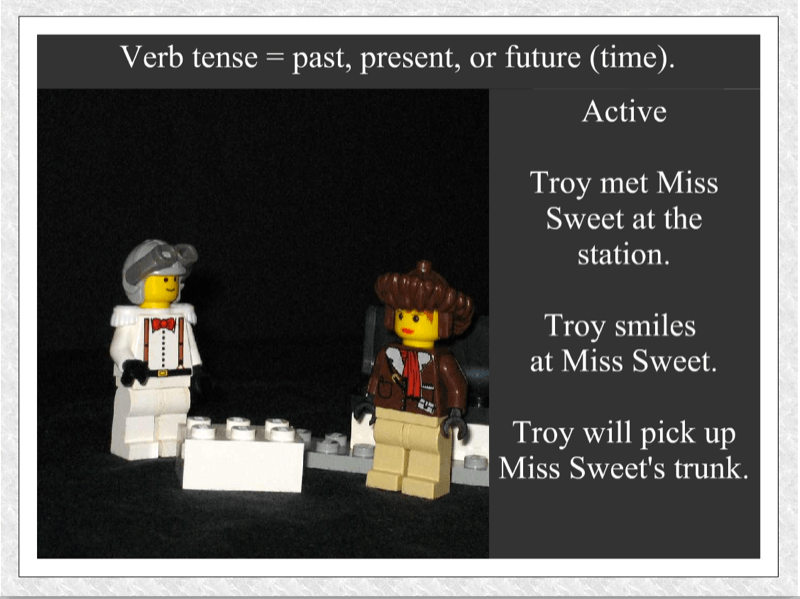
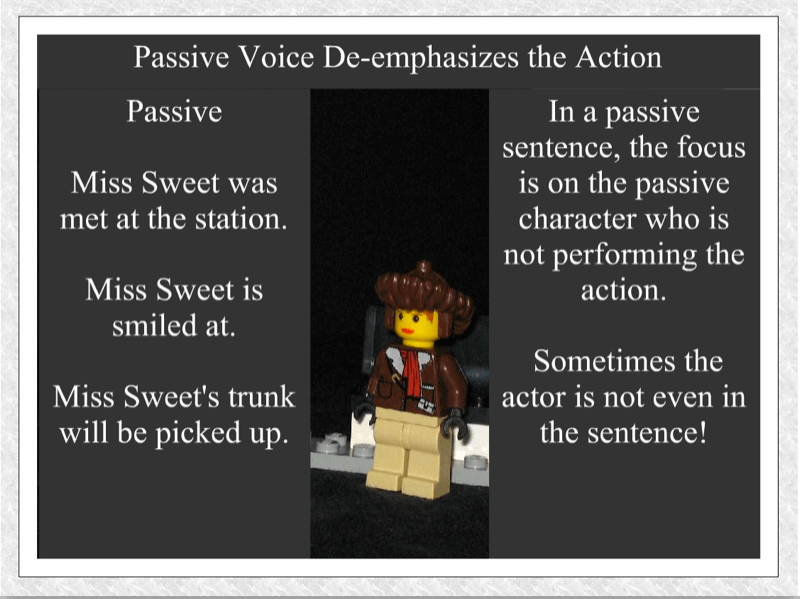

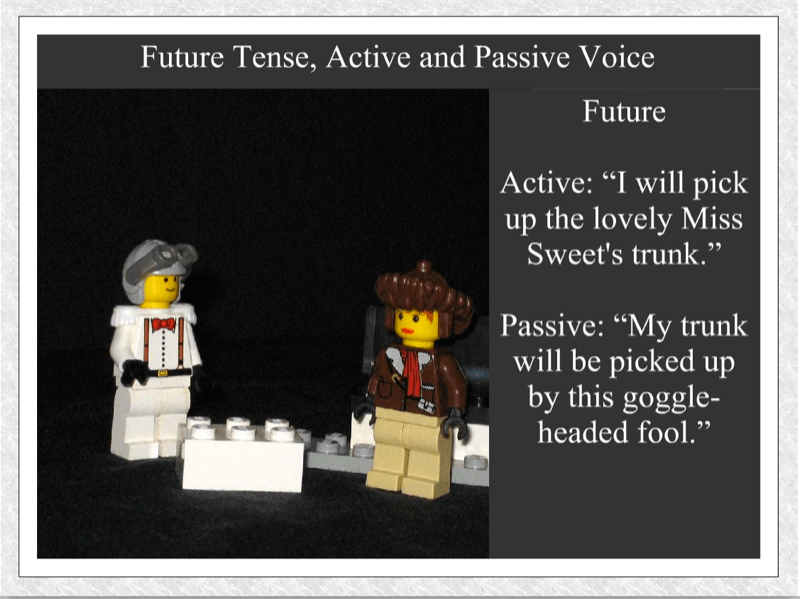
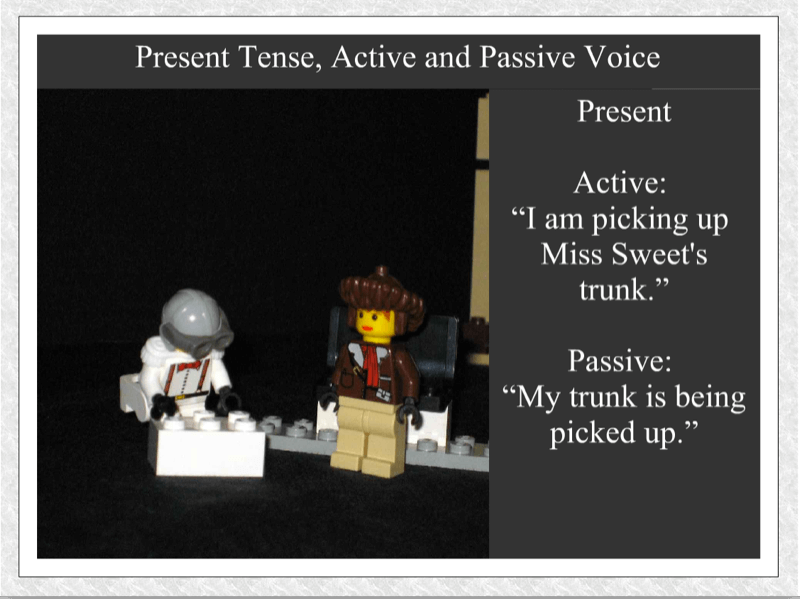
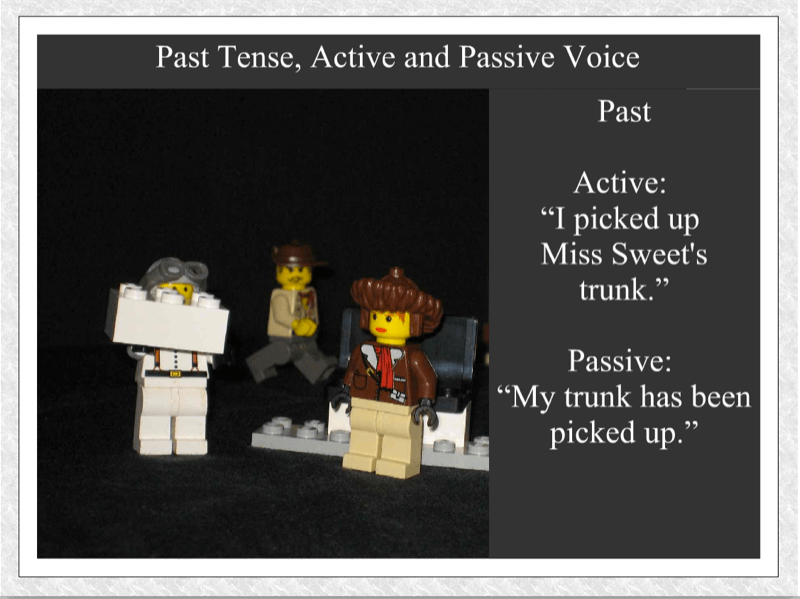

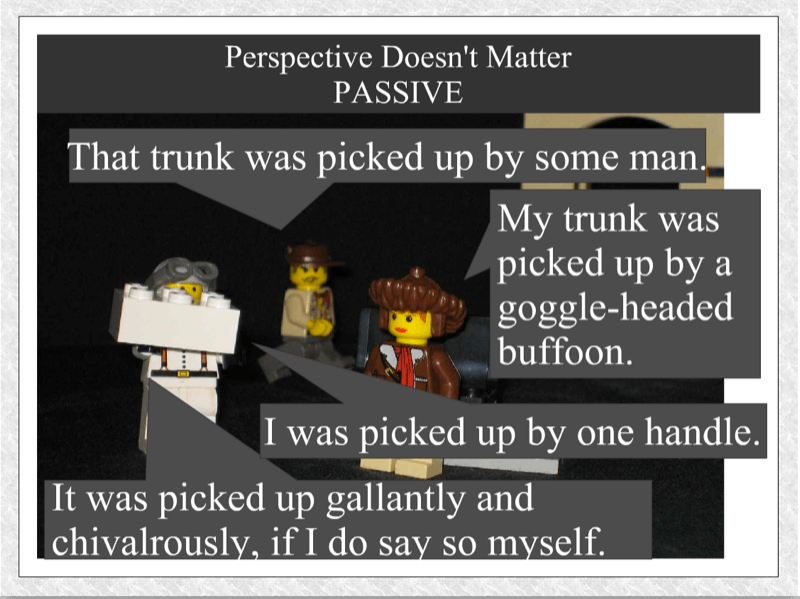
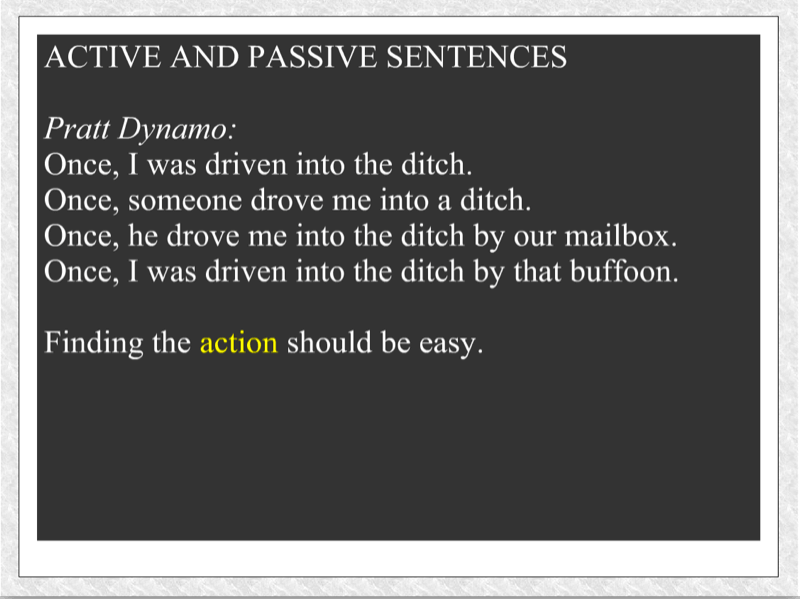
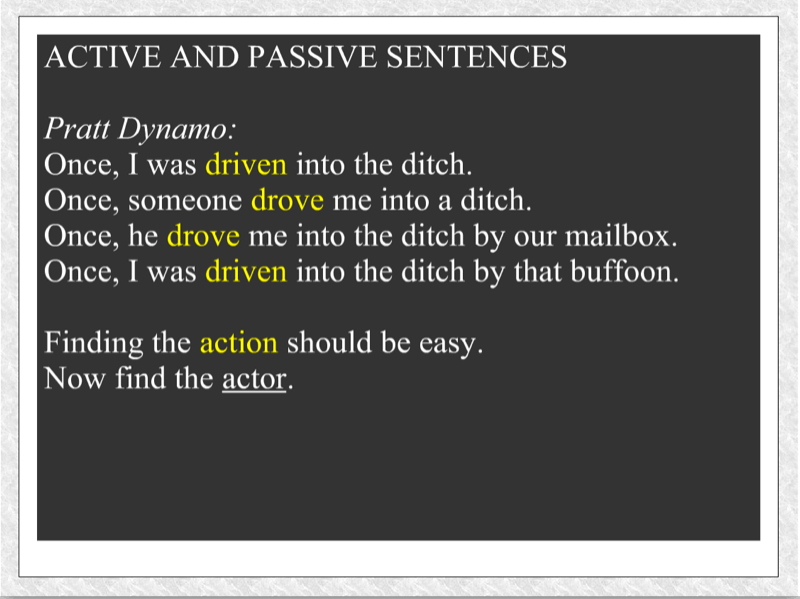
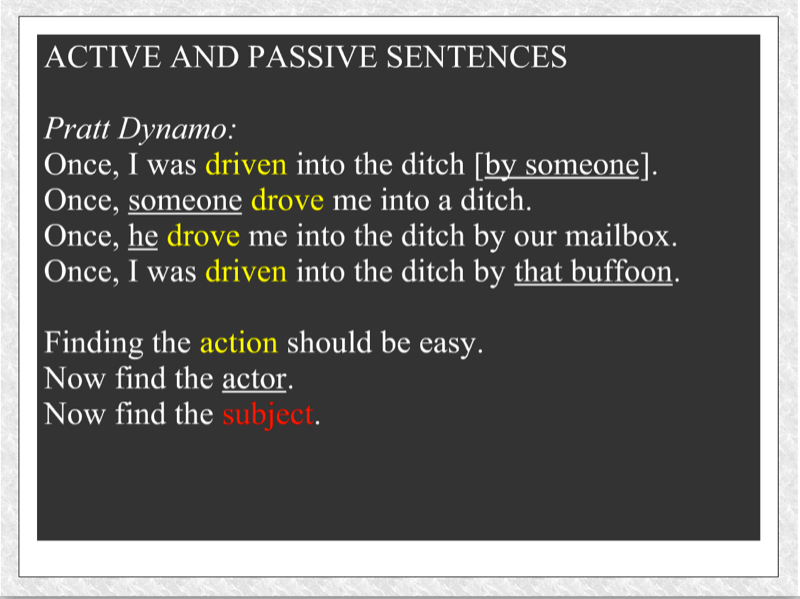
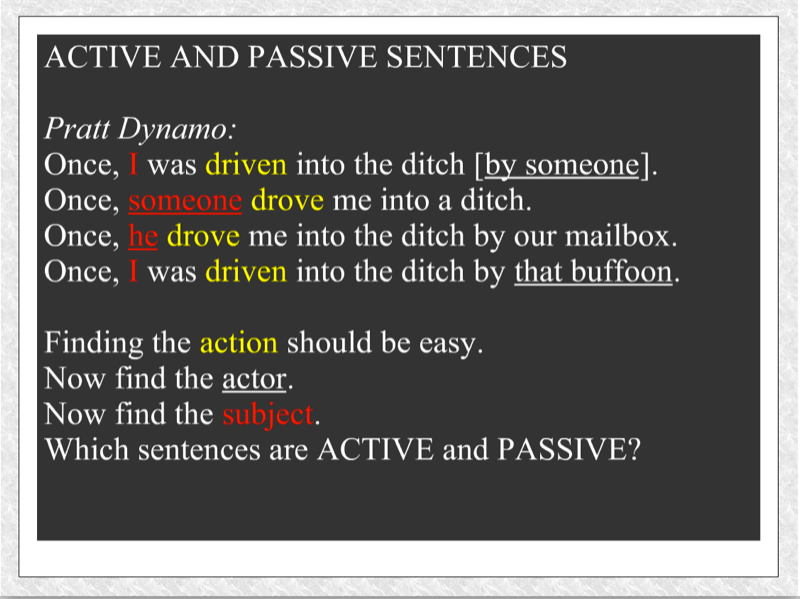
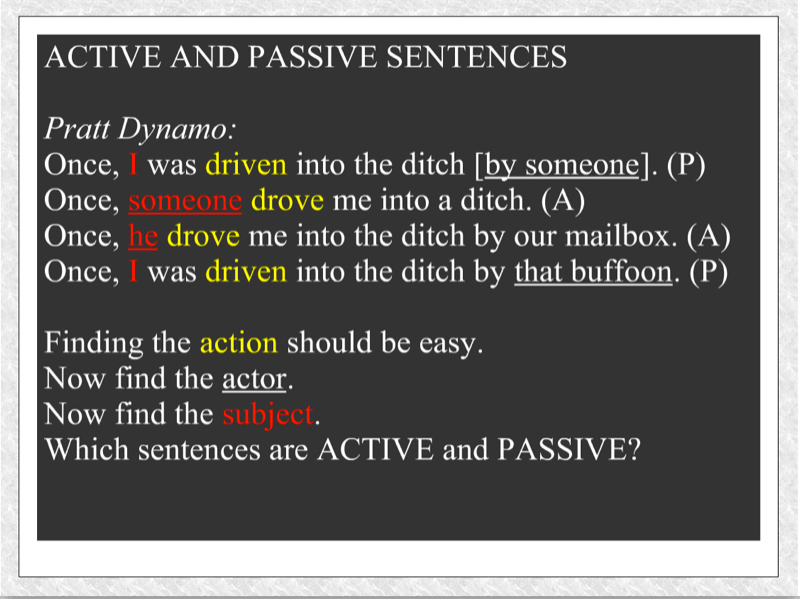
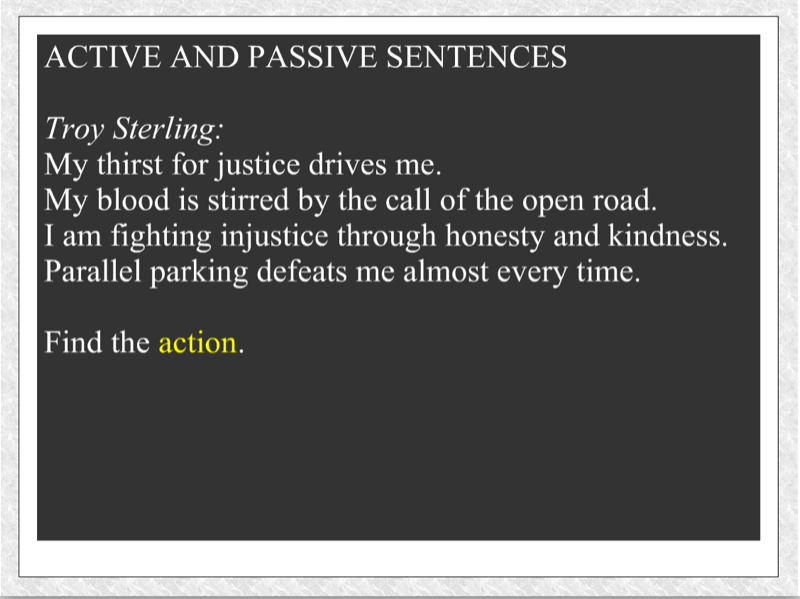
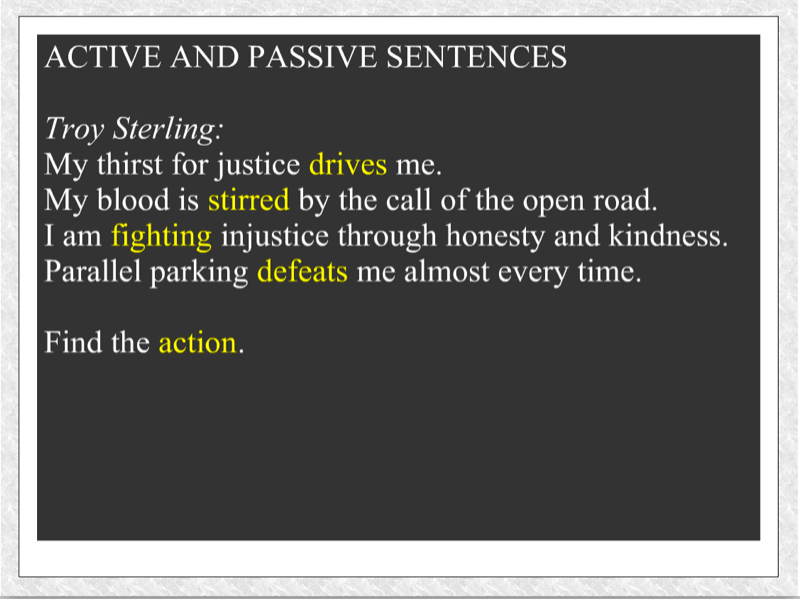

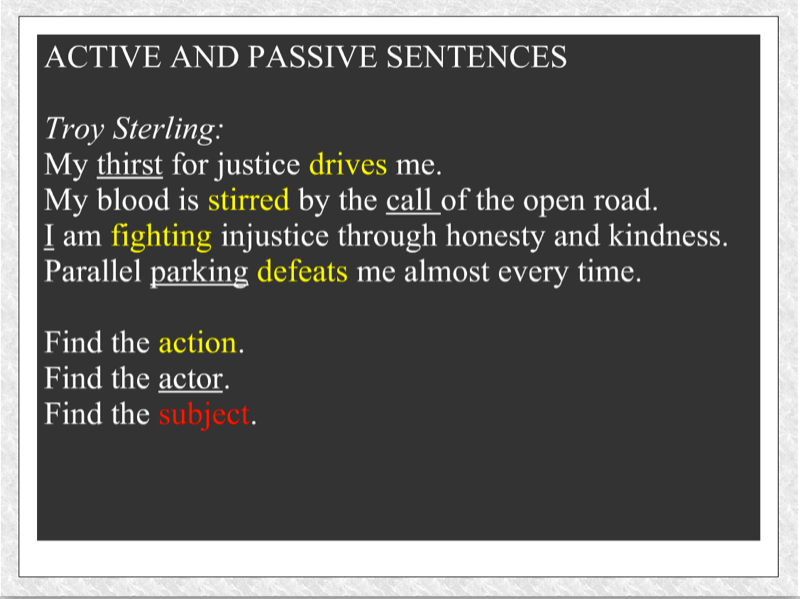
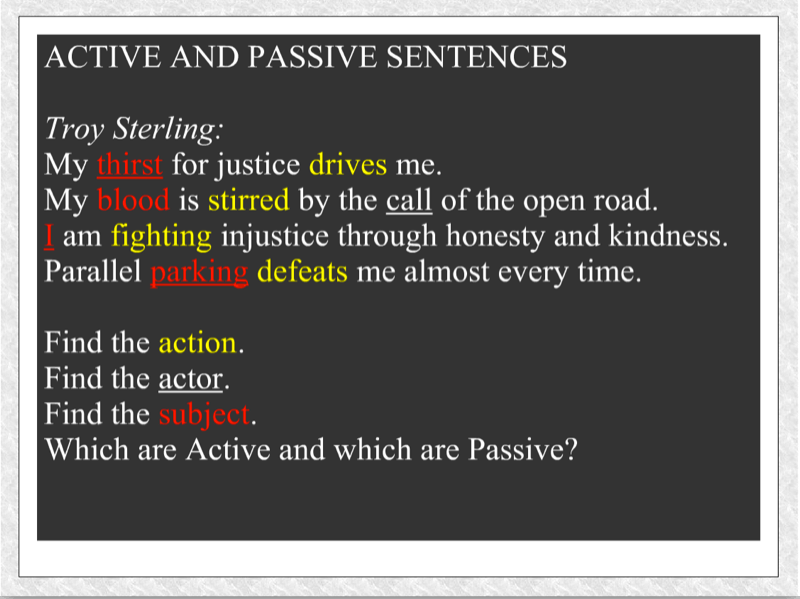
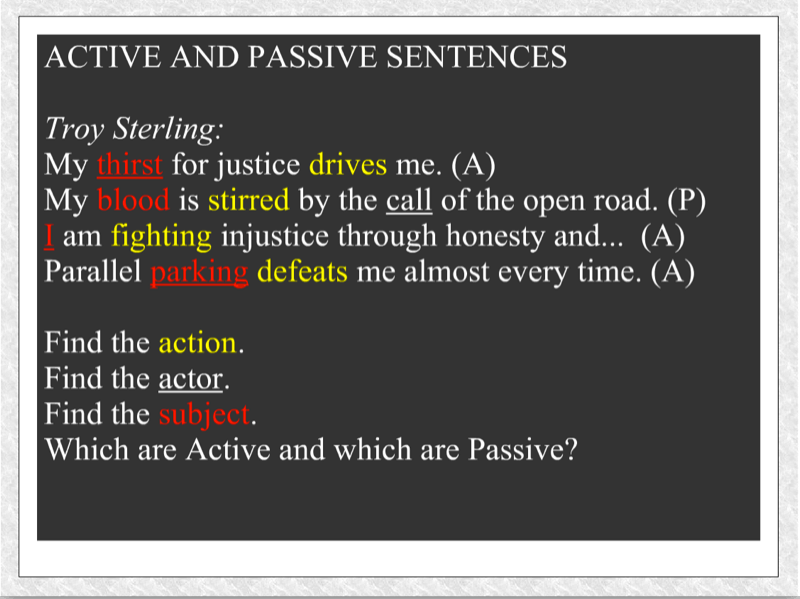
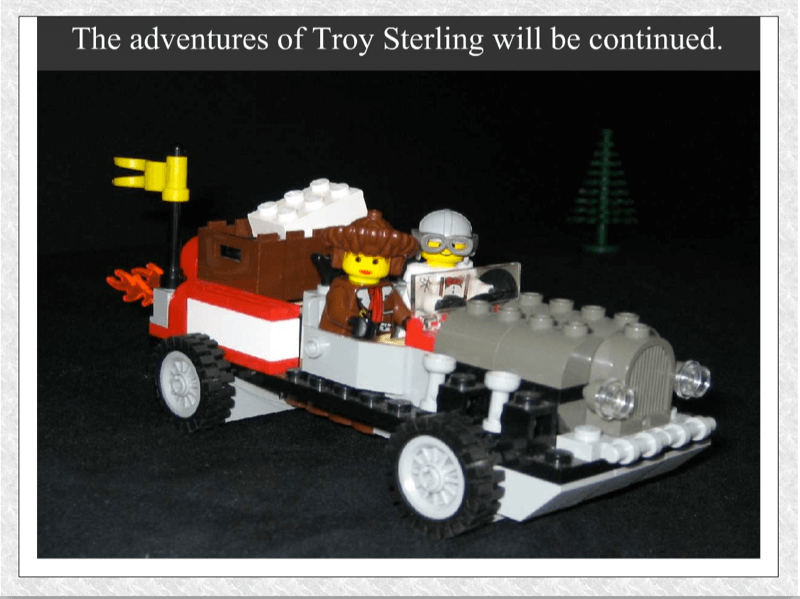
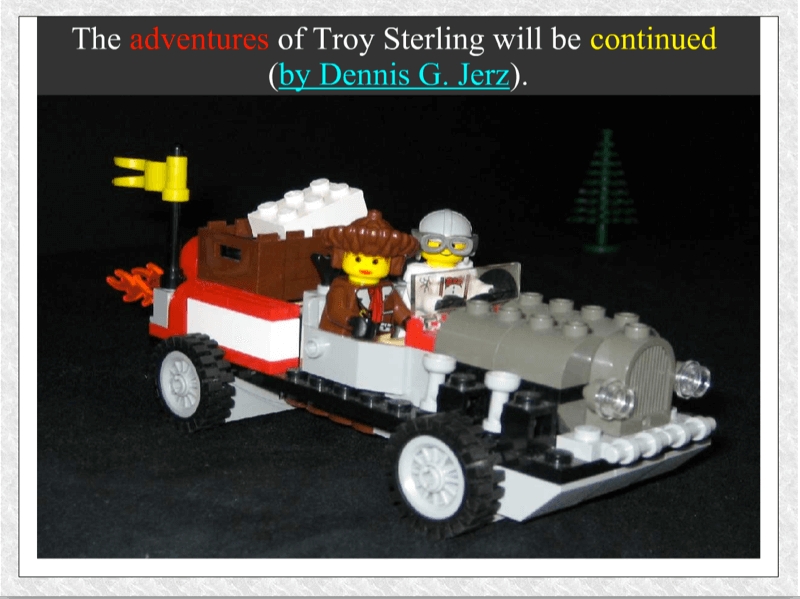





great post! i think people learning english will love this!
Cool–thanks! It will be interesting to see their reaction (they tend to be so very “serious” when it comes to academics…. This will be good for them ;))
A.
Hello, Andrea. Yes, you are welcome to use that material — that’s why I post it online. I’d be happy to hear what your students think.
Hey Dennis,
I am teaching an ESL course for graduate students this semester and was just searching for additional grammar “stuff” when I came across your website. I love the active/passive slide show! And I know my students would get a kick out of it. Would you mind if I posted a link to it on our course website?
Thanks–Andrea (from CCCC workshop New Orleans)
This recent exchange got deleted after I had to restore from a backup:
Beth Stovell said:
Hi Dr. Jerz,
I’m a PhD student who will be teaching a course on writing and research skills in the fall and I would like to use the Troy Sterling slideshow. I think the students would respond well to its use of humour and its visual engagement.
I deeply appreciate the resources you list on your website as I am only starting to create and organize my materials for this course.
If you have any suggestions or advice, I have very open ears.
January 2, 2008 12:09 PM
Dennis G. Jerz said:
Thanks for the note, Beth. Feel free to use it, and if you like, please stop by again and let me know how it goes.
January 2, 2008 5:51 PM
I definitely remember you — you sat along what would have been your right side of the classroom.
For one of your projects you created a poetry handout that I still use every year.
It’s hilarious and informative! It’s great!
Do you remember me, Prof. Jerz? I was a student in one of your technical writing courses at UWEC a few years ago.
Thanks for the compliment, Jess P… but you should probably get out a little more. ;)
That was the raddest thing I’ve ever seen in the world ever.
Glad to know the site helped, Sadrie, and congratulations.
It didn’t really take all that long… I had already made the car (a custom job, combining two different car sets). I think I made the set one day when my daughter was napping, and took the photos during the next day’s nap.
I took more photos than I used in this version… one day I’ll put up an expansion.
How long did it take you (or whoever) to build that “set”? I’m a budding writer (thirteen years, and proud) This site helped me to get the 90% I got on my ELA (English Language Arts) exam. Thanks.
Great job, Jerz!
Er… yes?
DENNIS?!
Glad you liked it, Leslie.
It is fantastic Jerz.
Argh! Now you’re making me feel guilty!
I’d say stately and elegant are both adjectives, not adverbs, but you’re right — it’s not a good idea to commit a stylistic error in order to illustrate a grammatical concept. I touch on that in my handout on gender-neutral language.
How about instead of “The dapper Troy Sterling grins winningly,” I change it to “The winning Troy Sterling grins dapperly”? Would that be any better? :P
Cool. (Loved that ‘buzz saw’ line!) Hey, it’s minor. But I see your wife’s point, though, and I humbly note that it’s a symptom of the dreaded ‘adverbitis’ problem again: after all, “stately and elegant” are adverbs, aren’t they? And do you really want a Swiftyism in a tool intended to teach grammar? Such a conceit can miseducate someone for life, or confuse and mitigate against your objectives here. There are other ways to make it parallel. Just something to consider, I submit humbly, ineptly, and unwelcomingly… but friend-ily.
Thanks again for the further comments.
I am still working on this — my wife didn’t like that I called Miss Sweet “stately, elegant” because she thought it made her sound like she was past her prime, but I was trying to emphasize that verbs can be active even if they don’t describe motion. And she also didn’t like that I called Troy a “buffoon” twice, so we’re trying to come up with a good synonym.
I can see your point about the awkwardness of “grins winningly,” but so far I think I’m going to keep it, not only for the sake of parallel clarity, but also because I thought of “winningly” as a kind of Tom Swifty. (You know… “‘That buzz saw just sliced through my wrist,’ Tom said off-handedly.”)
CUTE! I love the cross-cutting you did between Miss Sweet and Dapper Troy, and the movement of the car (those flags actually look like they’re blowing in the wind!). The active vs. passive tutorial is really quite good. It hammers home the concept with sharp nails.
Are you still editing it? Would I be a total grammar putz or comment creep if I made a humble editorial suggestion? I can see why you’d construct the sentences to illustrate the tricky flip-floppiness of form, but I’d still put the adverbs before the verbs. The phrase “grins winningly” made the schoolmarm inside me “frown wincingly.” Otherwise, I think it’s sharply written and lots of fun!
Brilliant! I already direct students in my religions course to the brick bible; now I have a lego url for my English students! Thank you for your creativity.
Love this! I’m going to use it, too!
Dennis, I love this new tool you found for handouts and using Legos is a stroke of genius! It is also great to see your IF characters back in action – Huzzah!
Now if I can just convince you to make the switch to Ubuntu…
Glad to see you find open-source software useful. There is an open-source flash editor (http://f4l.sourceforge.net/) available if you really wanted to get carried away…
I have been developing some Impress presentations on grammar points lately but I never thought of using Legos! How cool!
I am going to have to see how I can be more creative with my presentations. You have certainly raised the bar!
Thanks for the feedback, everyone. Evan, I’ll definitely check out that software tip.
This is great! I am going to add it on as a link in my developmental writing class at http://collegeenglish.wikispaces.com/spark
Thanks for all the great stuff you are doing!!!
Glad you liked it, Holly. If I get the time, I’ll post a different slide show on punctuation and proofreading.
Impress is just a clone of PowerPoint, so yes, it’s very easy to use. I’m a textual person, so I wrote out the script first, and just described in brackets what photos I wanted at each stage. I took more photos because the original storyboard was longer, but the week I needed this for class I was too busy to make the whole thing. I figure I’ll expand it the next time I need it.
Making the Legos and setting up the photos was the hardest part, but it got my son (who is 8) intersted in active and passive vebs. My wife thought I was crazy when I set up all those legos on the floor, but it was fun.
I wonder whether students who play The Sims or draw comics might also be interested in drawing on those resources to help storyboard a similar tutorial.
Really cool! I’m going to link to this on the CCE blog. It’s such a great example of using technology in the classroom. Is the software easy enough to use that students could create this sort of mini-tutorial on their own?